

Teaching with a Five-Paragraph Essay Example
Looking for a five-paragraph essay example? Look and listen in as a fourth grade teacher models this strong writing structure for her students.
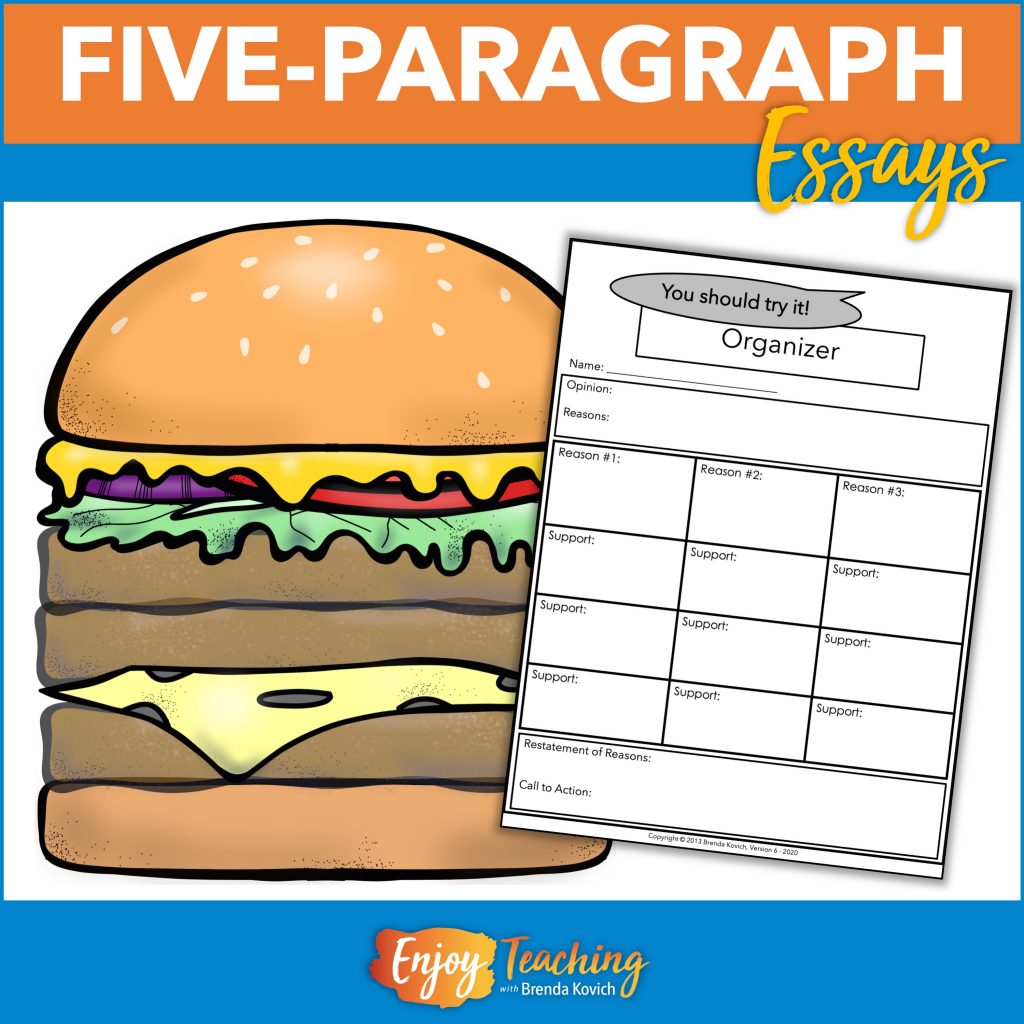
Ms. Sneed Grades Her Kids’ Paragraphs
As our favorite fourth grade teacher graded her class’s latest paragraphs, she let out a satisfied sigh. First they tackled paragraph structure. Then they learned to elaborate. Additionally, they improved their writing by varying sentences and using transitions. Now that they had the writing strategies down, her kids were ready to scaffold from one paragraph to the five-paragraph essay .
Purposefully tackling each genre of writing – then scaffolding from shorter to longer – was sure to work for her.
A Five-Paragraph Essay Example
Ms. Sneed turned and opened her laptop. With just a few clicks, she found it. Her favorite prompt, You Should Try It , asked kids to persuade others to try an activity – in five paragraphs.
Teaching Paragraph by Paragraph
The following Monday, Ms. Sneed stood in front of her class. “Today,” she said, “you will learn how to write a longer essay.”
Several kids looked a little unsure, but their teacher continued. “For now, I’ll take you through a five-paragraph essay example. That should ease your concerns.”
First Paragraph
Ms. Sneed projected a sample. “The first paragraph, or introduction, includes a thesis statement and supportive factual reasons.”
With the mention of a new term, thesis statement , more kids looked uncomfortable. Some squirmed in their seats.
“Now I know the term thesis statement is new, but no worries! You know it as a topic sentence. However, the thesis is the main idea of a multi-paragraph composition.”
The teacher read the paragraph aloud. “Can anyone pick out the thesis for this persuasive essay?” she asked.
One student slowly raised his hand. “Wouldn’t you like to try water skiing?”
“Yes! Although it’s written as a question, this sentence offers an opinion. Furthermore, the entire essay supports this thesis. Can you find the author’s three supporting reasons?”
Using the five-paragraph essay example, the class soon established the supporting details too: improving health, impressing friends, and teaching them to ski.

Second Paragraph
“Now let’s look at the second paragraph,” Ms. Sneed said.

“You identified one of the main details as health. As you can see, this paragraph expands on that reason.”
“That’s just what we were doing with one paragraph,” piped up a girl in the back row.
“Um-hm. True. But writing in five paragraphs gives you more room to elaborate.”
The kids seemed to relax in their seats. This wasn’t so bad after all.
Third Paragraph
With no further ado, she pulled up the third paragraph. “See, paragraph #3 discusses the second main supportive detail.”
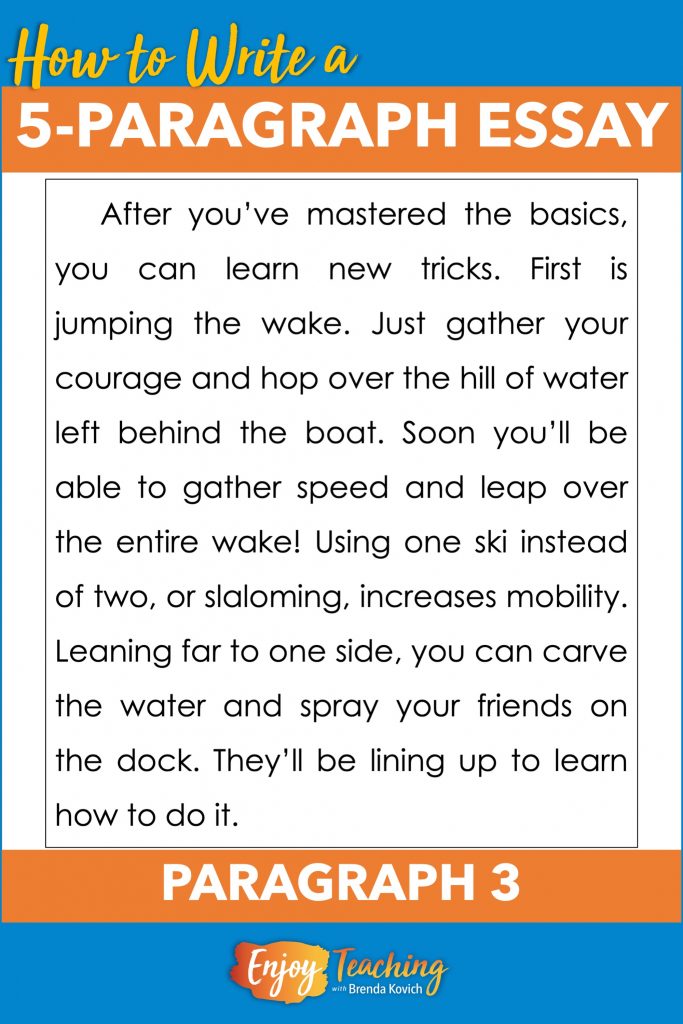
After they read the paragraph aloud, Ms. Sneed asked, “Who can find the topic sentence of this paragraph?”
“Isn’t it the first sentence?” said a boy with purple glasses.
Ms. Sneed nodded. “Easy peasy. The main idea of this paragraph, as we said before, is the second reason.”
Fourth Paragraph
For the fourth paragraph, Ms. Sneed tried a new tactic. “Okay, think-pair-share! Find the the topic sentences and smaller details that support it.” Her students knew what this meant. Immediately, they turned to their seat partners and began to discuss.

After a few minutes, groups began to share:
“The first sentence is the topic sentence again,” said the first spokesperson.
“And the details are the steps in teaching,” said the second.
“Ahh, a sequence paragraph inside a five-paragraph persuasive essay,” Ms. Sneed remarked. That famous teacher smile spread across her face.
Fifth Paragraph
“Here we have the final paragraph, or conclusion,” the teacher continued.

After she read the paragraph aloud, Ms. Sneed pointed out the restated thesis statement and details. “It’s a repeat of the first paragraph in different words.”
A Five-Paragraph Essay Example – and a Hamburger!
Quickly, strode toward the board. She picked up a marker and sketched a hamburger with three patties. “Does this look familiar?”
Everyone smiled and nodded. Ms. Sneed’s favorite analogy for an writing a paragraph !
“We just used this again,” their teacher said. “The top bun is the first paragraph. It introduces the main idea with a thesis statement and supporting details. The first hamburger patty explores the first detail; the second, the second; and the third, the third! Finally, the bottom bun wraps it all up with a restatement of the thesis and details. This helps you write, as well as find the main idea and supporting details .”
“It’s just a giant version of the paragraph,” said a small girl in the front corner.
“Yep,” replied Ms. Sneed. “Not hard at all – if you know what you’re doing. Over the next few months, we’ll write more of these essays in our ELA block . Then you’ll feel even more confident.”

Join my VIP teacher email club!

When I look back to my first experience teaching five paragraph essays to fifth graders, I can remember how terribly unprepared I felt.
I knew that the five paragraph essay format was what my students needed to help them pass our state’s writing assessment but I had no idea where to start.
I researched the few grade-appropriate essays I could find online (these were the days before Pinterest and Teachers Pay Teachers) and determined that there was a structure to follow.
Every essay followed the same basic structure. I taught the structure to my students and they did well.
I have been teaching five paragraph essay structure and everything that goes with it for several years now. I hope that after you read this blog post, you will have a good understanding of how to teach and grade five paragraph essays.
Once you’ve learned all about teaching basic essay structure, you’ll be ready to grow your writers from “blah” to brilliant!
Teaching five paragraph essays is just one part of teaching 5th grade writing. Click here to find out exactly how I teach writing to my 5th graders!

Start with Simple Paragraphs
We always start with simple paragraphs.
Yes, this is basic, but if your students cannot write excellent paragraphs, their five paragraph essays will be train wrecks. Trust me!
We spend a while cementing paragraph structure:
Topic Sentence
Closing Sentence
I give students topics, they come up with their own topics, we write together, they write with a partner or independently, the more variety, the better.
We have fun with simple paragraphs. Then, it’s time to move on to body paragraphs.

Organize and Write Body Paragraphs
Please refer to my five paragraph essay organizer below.
The three body paragraphs are absolutely crucial to the success of the five paragraph essay.
Some teachers have trouble teaching the structure of five paragraph essays because they start with the introduction paragraph.
Always teach the body paragraphs first!

I had a teacher say to me once, “What’s the point of just writing parts of the essay? They need to write the entire five paragraphs to get all of the practice they need.”
I understand that point. However, think of it as building a house. Should you test out the foundation and make sure it’s sound and sturdy before building on top of it? Absolutely! That’s what we’re doing here.
The three body paragraphs are the foundation of the essay.
Ask students to write out their three body paragraphs just like they have practiced…Topic sentence…Detail 1…Detail 2…Detail 3…Closing Sentence.
I “ooooh and aaaah” over their three paragraphs. Students are on their way to five paragraph essays, so be sure to build their confidence.

Teach the Introduction Paragraph
I have to say, this is my favorite paragraph to teach. The introduction paragraph is what draws readers into the essay and makes them want to read more.
We start with what I call a “hook.” The hook captures the readers’ attention and can come in many forms: asking a question, making a bold statement, sharing a memory, etc.
After the hook, I ask students to add a sentence or two of applicable commentary about the hook or about the prompt in general.
Finally, we add the thesis sentence. The thesis sentence always follows the same formula: Restate the prompt, topic 1, topic 2, and topic 3.
That’s all you need to write an excellent introduction paragraph!
I do suggest having students write the introduction paragraph plus body paragraphs a couple of times before teaching the closing paragraph.

Teach the Closing Paragraph
In the conclusion paragraph, we mainly focus on restating the thesis and including an engaging closing thought.
With my students, I use the analogy of a gift.
The introduction paragraph and body paragraphs are the gift and the conclusion paragraph is the ribbon that ties everything together and finishes the package.
When you talk about restating the thesis sentence, tell students that they need to make it sound different enough from their original thesis sentence to save their readers from boredom.
Who wants to read the same thing twice? No one!
Students can change up the format and wording a bit to make it fresh.
I enjoy teaching the closing thought because it’s so open to however students want to create it.
Ways to write the closing thought: ask a question, personal statement, call to action, or even a quote.
I especially like reading the essays in which a quote is used as a closing thought or a powerful statement is used.

Example of a full five paragraph essay

Let’s Talk About Color-Coding!
Who doesn’t like to color? This is coloring with a purpose!
Training your students to color-code their paragraphs and essays will make grading so much easier and will provide reminders and reinforcements for students.
When students color-code their writing, they must think about the parts of their paragraphs, like topic sentences, details, and the closing sentence.
They will be able to see if they are missing something or if they’ve written something out of order.
Color-coding is a wonderful help for the teacher because you can skim to ensure that all parts of your students’ paragraphs and essays are present.
Also, when you are grading, you can quickly scan the paragraphs and essays. Trust me, you will develop a quick essay-grading ability.
I start color-coding with my students at the very beginning when they are working on simple paragraphs. I add the additional elements of the color-code as we progress through our five paragraph essays.
This is the code that I use:

Let’s Talk About Grading Five Paragraph Essays!
Imagine a lonely, stressed teacher grading five paragraph essays on the couch while her husband is working the night shift.
That was me!
Seriously, guys, I would spend about ten minutes per essay. I marked every little error, I made notes for improvement and notes of encouragement. I reworked their incorrect structure.
Those papers were full of marks.
On Monday, I proudly brought back the essays and asked students to look over them and learn what they needed to fix for next time.
You can guess what happened… there were lots of graded essays in the trashcan at the end of the day.

I decided that my grading practices had to change. I needed my weekends back and my students needed to find their own errors!
This is my best advice:
STOP correcting every error!
Your students are not benefiting from marks all over their writing. They need to find those errors themselves so that they will remember their mistakes and change their writing habits.
Do a quick scan of each student’s writing as soon as it’s turned in to you.
If there are major problems with a student’s writing, call him/her over individually and show him/her what needs to be fixed or put the student with a competent peer editor who will help them fix mistakes.
If you have several students who are struggling with a skill, like closing sentences, do a mini-lesson on this topic.
You can do a mini-lesson with a small group. However, I prefer doing mini-lessons with the entire class. The kids who need help will get it and the rest of your class will receive a refresher.
It’s OK if there are some small spelling/grammar mistakes!
If the errors are few and they don’t take away from the meaning/flow of the essay, I don’t worry about them.
Our students are still learning.
Even your brightest star writer will have a few spelling/grammar mistakes from time to time.
Don’t discourage students from writing because of small errors.
Students who receive papers back with markings all over them don’t think, “Oh boy, my teacher has made it so easy for me to make all of these corrections.” They are thinking, “What’s the point in writing? I must be a terrible writer. Look at all of these mistakes.”
If your students are taking a standardized writing assessment, the structure and flow of their essays will be worth much more than perfect spelling.
Need more help?
I created this five paragraph essay instructional unit for teachers who are new to teaching five paragraph essays OR just need all of the materials in one place.
“Teacher Talk” pages will guide you through the unit and this unit contains all materials needed to help students plan, organize, and write amazing five paragraph essays! Click here to check it out:

I have a freebie for you! Enter your first name and email address below. You’ll receive three original prompts with five paragraph essay organizers AND two lined final draft pages!
Once your students are good essay writers…
These task cards will help your students stay sharp on their five paragraph essay knowledge. Students will review hooks (attention-getters), thesis sentences, body paragraphs, topic sentences, closings, and more. Each card contains a unique writing example!
I suggest using these task cards as a quiz/test, scoot game, individual review, or cooperative group activity.
Click on the image to view these task cards:

To save this post for later, simply pin this image to your teacher Pinterest board!
21 comments.
Wow! I really enjoyed reading this. I’ve always stressed over the thought of teaching writing, but your blog makes me think I can do it successfully. Putting your writing packet on my TPT wish list!
Thank you, Shannon! I appreciate you taking the time to leave a comment. I am so glad that my blog post was helpful to you!
Thanks for the tips! When I taught 6th grade I taught this same subject matter, but struggled to get started. I wish I had this then!
I appreciate your comment! Teaching was much different before Pinterest, wasn’t it?!?
This helped me so much!🙂 thanks a lot, I imagined being one student of yours. I’d be so smart and good at essays! Would’ve been so much easier in person❤️❤️❤️
Thank you so much, Aizlyn!
Thank you so much for this! May I ask where I can see the rubric for scoring the compositions?
You are so welcome! Click on the resource link. Then, you will see the rubric in the preview!
Thank you so much,I am a parent and this really helped me be clear how to guide my son. God bless you always.,
Thanks for taking the time to leave a comment!
you are welcome!!!
This looks great! Looking forward to using your tips and freebies with my 6th graders. 🙂 THANK YOU.
You are so welcome! Thank you for taking the time to leave a comment!
Can’t wait to use this with my class tomorrow! Thanks a bunch for sharing!!
You are so welcome, Amy!
Thank you for making it easy to teach an essay with clarity.
You are very welcome, Yamuna! Thanks for taking the time to leave feedback 🙂
I am so happy I discovered your blog. I just started teaching grade 5 in September I have been searching for a simple method to hel me in guiding them in writing. I will be putting your method into practice in the coming week.
That’s wonderful, Cherry! Thank you for sharing your thoughts! Welcome to fifth grade 🙂
Beautiful lesson well explained! Thank you so very much .
Thank you so much, Cheryl!
Leave a Reply Cancel reply
Your email address will not be published. Required fields are marked *
Notify me of follow-up comments by email.
Notify me of new posts by email.
This site uses Akismet to reduce spam. Learn how your comment data is processed .
You may also enjoy...

Teaching the Salem Witch Trials in Upper Elementary

How to Teach the Lost Colony of Roanoke – A Guide for Teachers

12 Back-to-School Writing Prompts

How to Teach the Lost Colony of Roanoke

History Meme Project for Students

The Step-By-Step Guide to Teaching Research Reports
What can i help you teach, find it here, let's connect, i'd love to connect with you.
Enter your first name and email address to join my exclusive VIP email club.
Copyright © 2020 | Thrive in Grade Five | All Rights Reserved
Quick Links
- Grades 6-12
- School Leaders
Get our FREE Classroom Seating Charts 🪑
101 Exciting 4th Grade Writing Prompts for 2023 (Free Printable!)
Use them for journal writing, essay topics, and more!
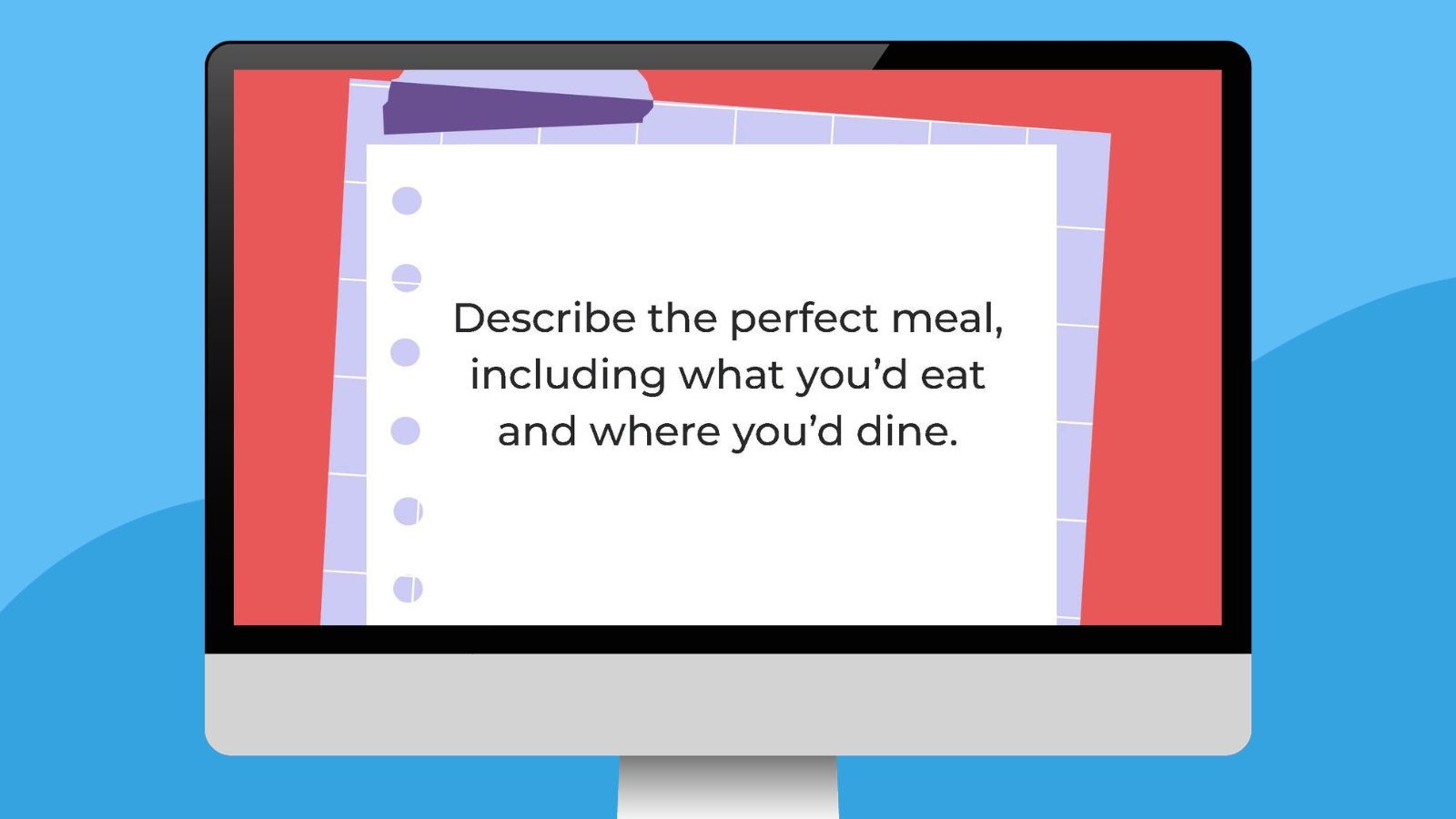
Fourth grade is a time for students to continue to hone their writing chops as they put to use the skills they’ve learned and gain confidence in their abilities. We’ve collected this list of fourth grade writing prompts—including opinion, persuasive, informational, and narrative—to spur your students’ imaginations and get them writing!
You can get 50 of these fourth grade writing prompts in a free PowerPoint slideshow bundle! They make it easy to share these writing ideas with your students. Grab your free PowerPoint bundle by submitting your email here .
- Persuasive and Opinion Writing Prompts
- Descriptive and Expository Writing Prompts
- Narrative and Personal Writing Prompts
- Creative Writing Prompts
- Current Events Writing Prompts
Persuasive and Opinion 4th Grade Writing Prompts
Would you rather be good at sports or good in school? Why?
Would you rather have lots of money or lots of friends? Why?
What is your favorite subject in school? Why?
Are fourth graders ready to stay home alone? Why or why not?
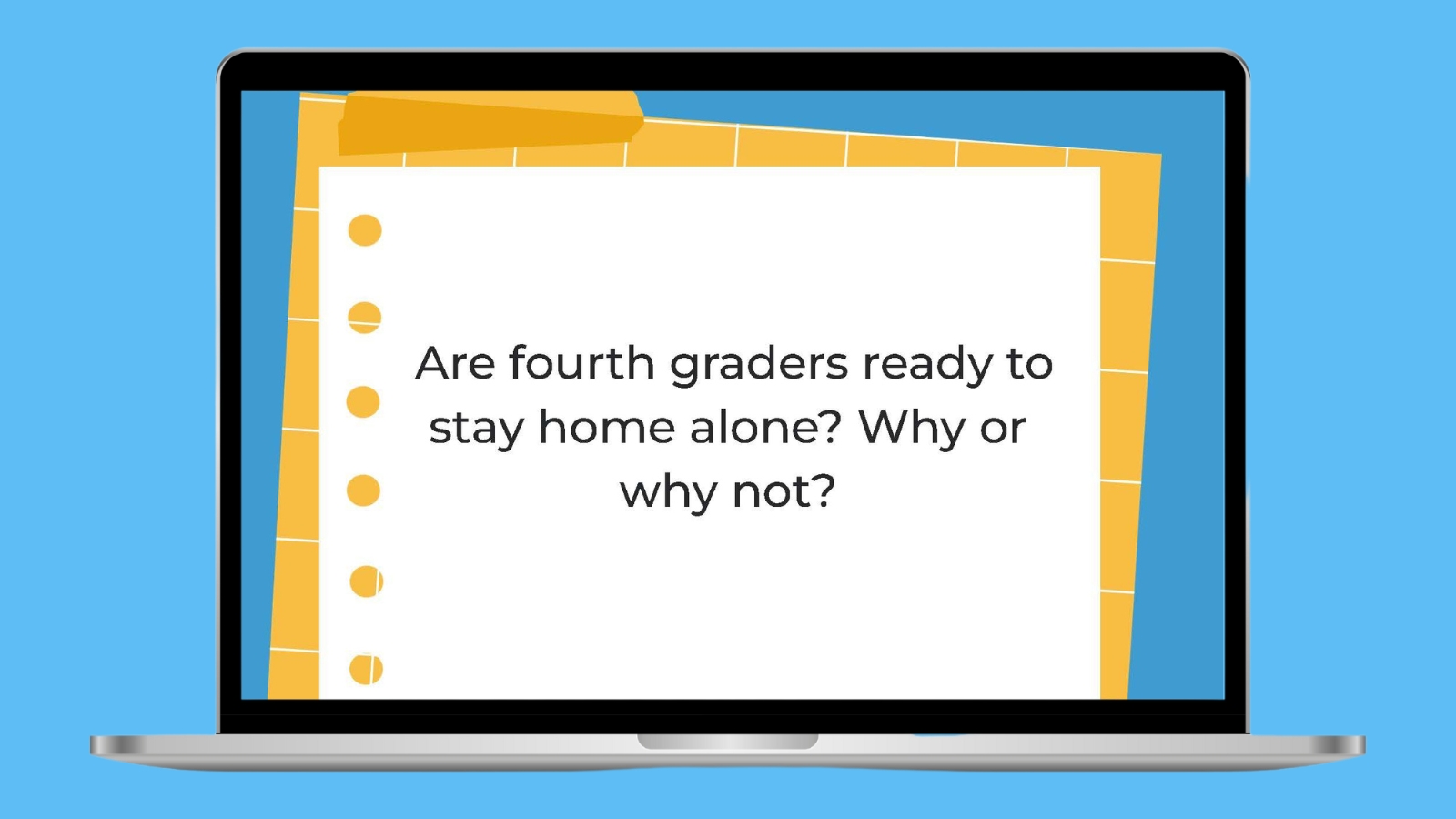
Name two characters from different books that you think might be good friends. Why?
Which is more important for success, skill or luck?
Should kids be paid an allowance to do chores around the house? Why or why not?
Why are classroom rules important?
If you had a time machine, what era of history would you visit?
Why is math important?
Why is science important?
Should fourth graders have cell phones? Why or why not?
If you could open a store, what type of store would it be and why?
Which would you rather read: a scary story that gives you goosebumps or a funny story that cracks you up? Why?
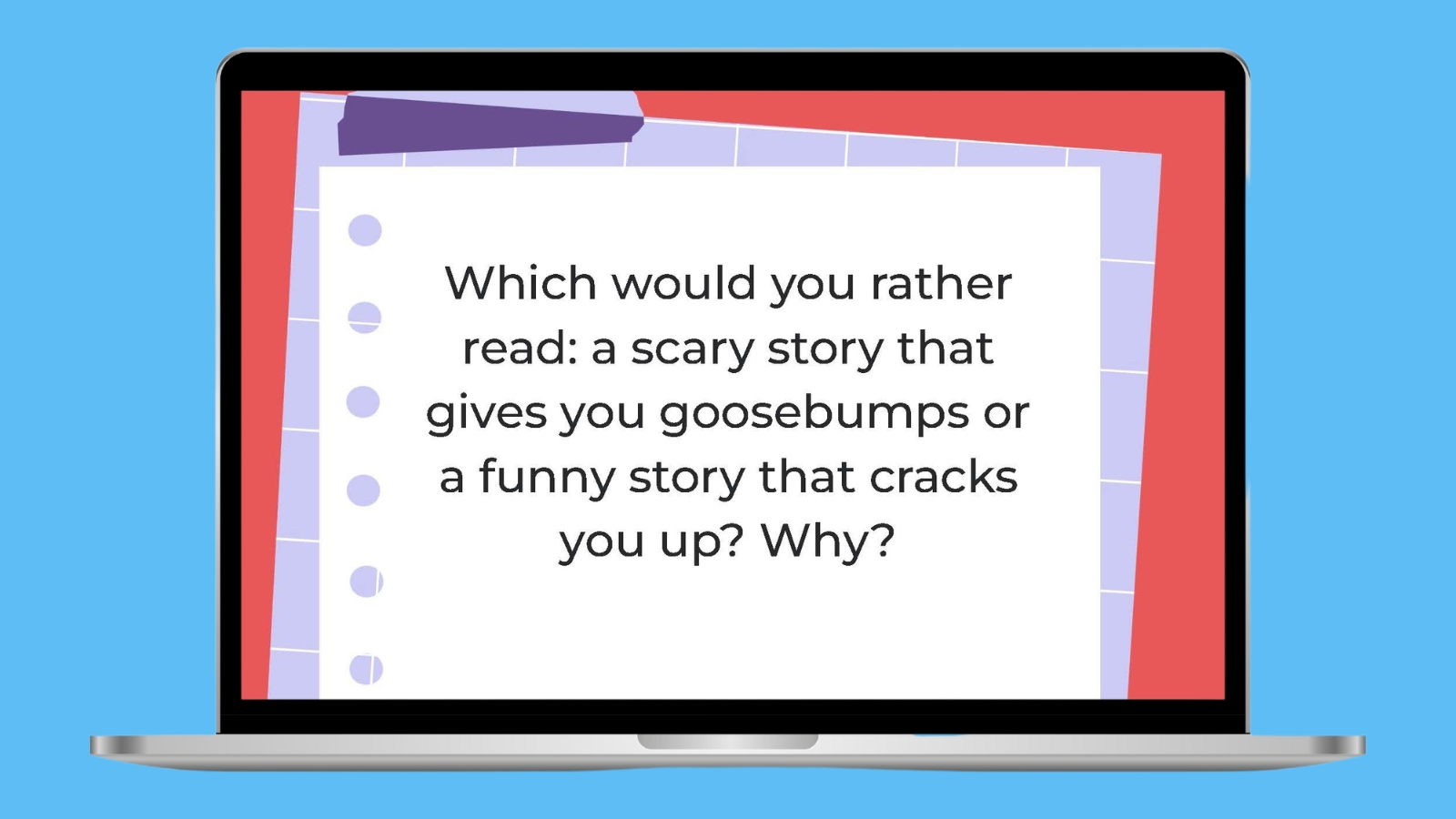
What is the hardest thing about being a fourth grader?
If I were the ruler of the world, the first law I would pass would be … because …
If you found a backpack filled with dollar bills, what would you do?
Is it ever OK to tell secrets? Why or why not?
What animal makes the best pet? Why?
Is it better to spend an hour a day reading or an hour a day exercising? Why?
Descriptive and Expository 4th Grade Writing Prompts
If you had a YouTube channel, what would you talk about?
What’s the best book you’ve read recently? What was it all about?
If you won a million dollars, how would you spend the money?

Describe what you think of as perfect weather.
Describe how to build a birdhouse step by step.
Write five rules for staying organized.
What is the worst book you ever read?
Describe the physical appearance of someone in your family in detail.
Imagine you are in a hot-air balloon above your house. Describe everything you can see.
Describe how to play your favorite board game.
There’s an old saying: “The squeaky wheel gets the grease.” What do you think this saying means?
Describe your perfect day.

One of your little cousins is very nervous about starting kindergarten. What would you tell them to make them feel better?
Imagine you are an adult and describe your dream job.
Explain your morning routine in detail, from waking up to arriving at school.
Describe the perfect meal, including what you’d eat and where you’d dine.
Share what you do on a typical non-school day.
Explain the right way to do one of your household chores, like making your bed or cleaning your room.
Describe your favorite room at home in detail.
How do you prepare for a big test? Describe the ways you study or practice.
Narrative and Personal 4th Grade Writing Prompts
Share one of the stories your family has told you about when you were a baby.
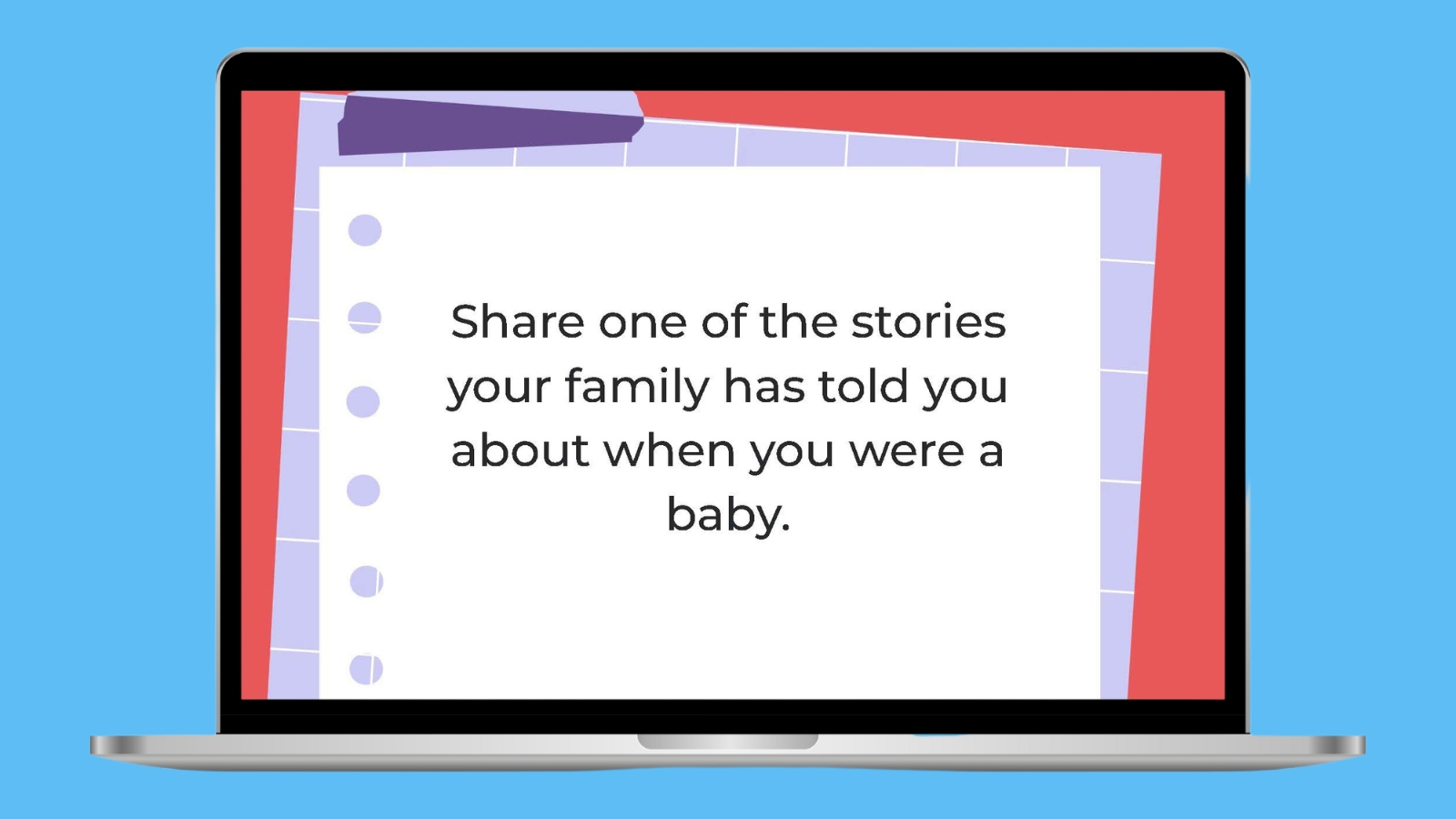
What is the funniest thing that has ever happened to you?
Write about an adult you look up to.
What’s the nicest thing anybody has ever done for you?
If you could change one thing about yourself, what would it be?
Write about a time you felt like quitting but didn’t. How did you keep yourself going?
Do you like nonfiction books or fiction books better? Why?
What makes your family unique?
What would you say is your greatest strength? Greatest weakness?
Are you a patient person? Why or why not?
What is something you’ve never done that you would like to try?
What is the weirdest thing that has ever happened to you?
Write about a time you tried something new and how you felt before, during, and after.
What is your earliest memory?
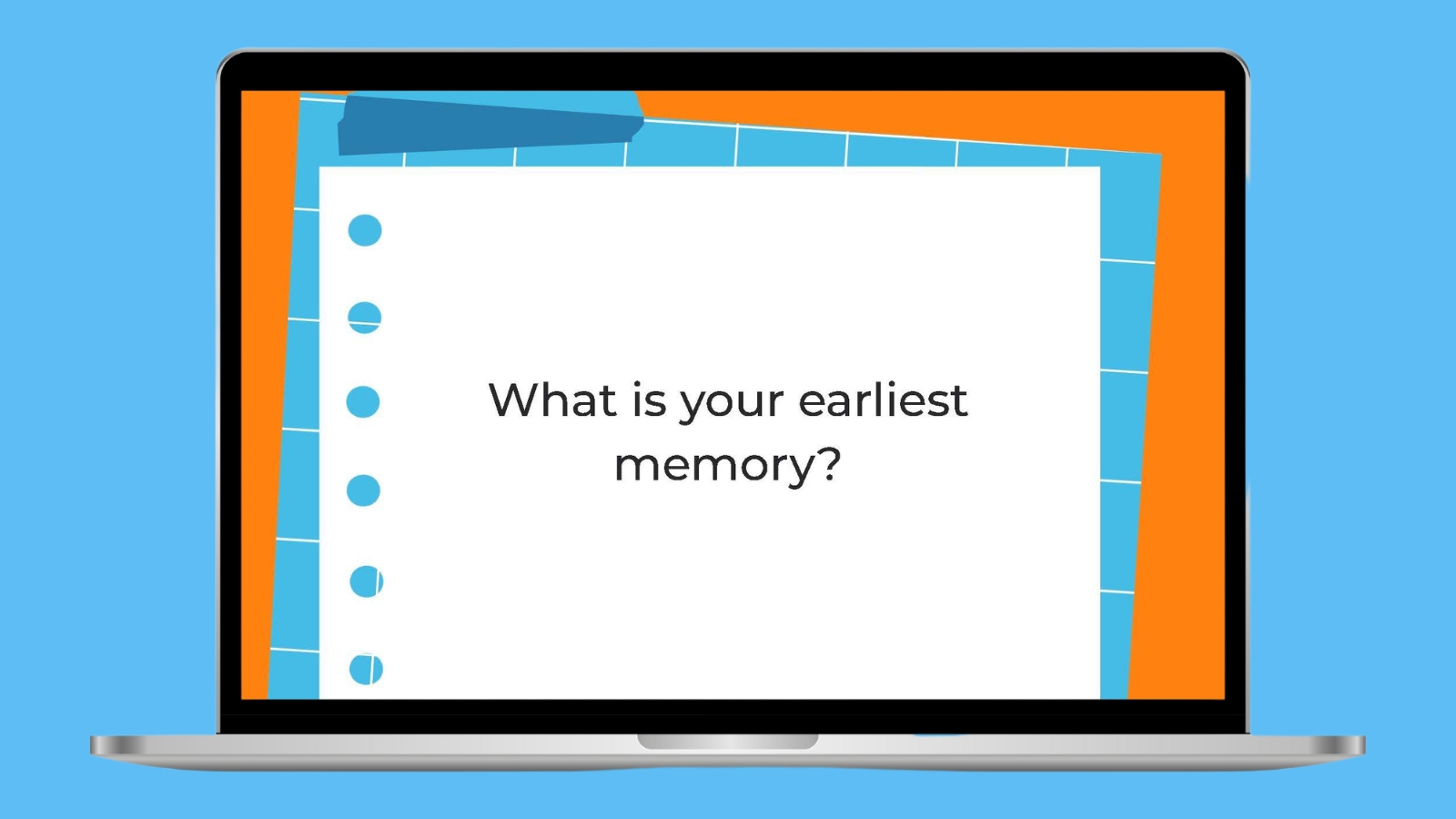
What’s your favorite holiday? What makes it so special?
Write about a time when you felt proud of yourself.
Tell the story of your favorite field trip of all time.
If you could relive any day in your life, what would it be? Would you want it to be the same or different?
What holiday is important to your family? Describe how you celebrate it together.
What’s the best gift you’ve ever gotten? How did it make you feel?
Creative 4th Grade Writing Prompts
If you met an alien, what three questions would you ask them?
Pretend you drank a magic potion that made you as tiny as an ant. Where would you go and what would you do?
Pretend you ate a magic pill that made you as tall as a redwood tree. Where would you go and what would you do?
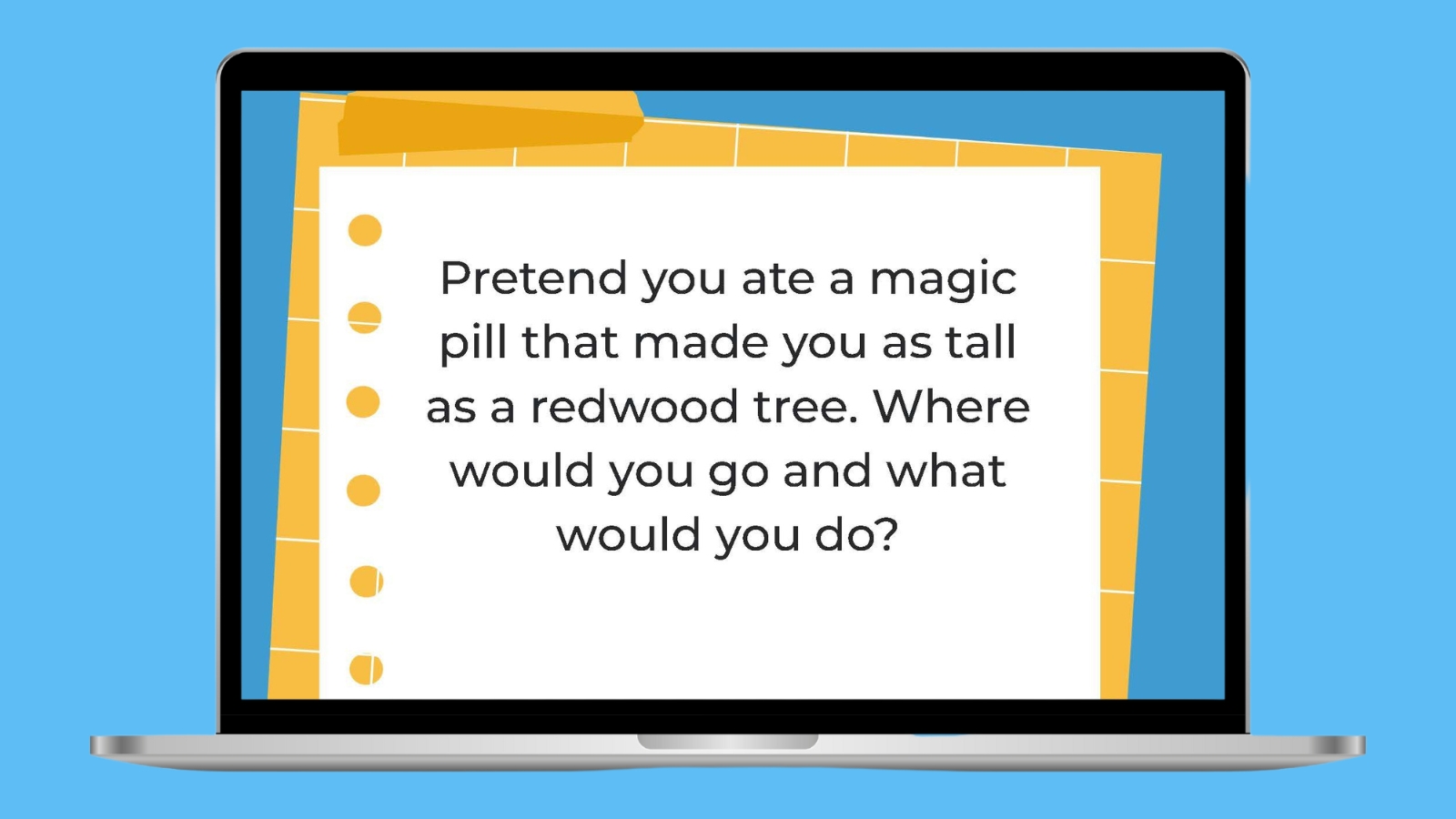
Write a story that includes these five words: keys, spaghetti, uncle, jellyfish, spaceship.
What would the world be like if dinosaurs still existed?
If you could invent something new the world really needs, what would it be? How would it work?
Retell a classic story, making the villain the hero instead.
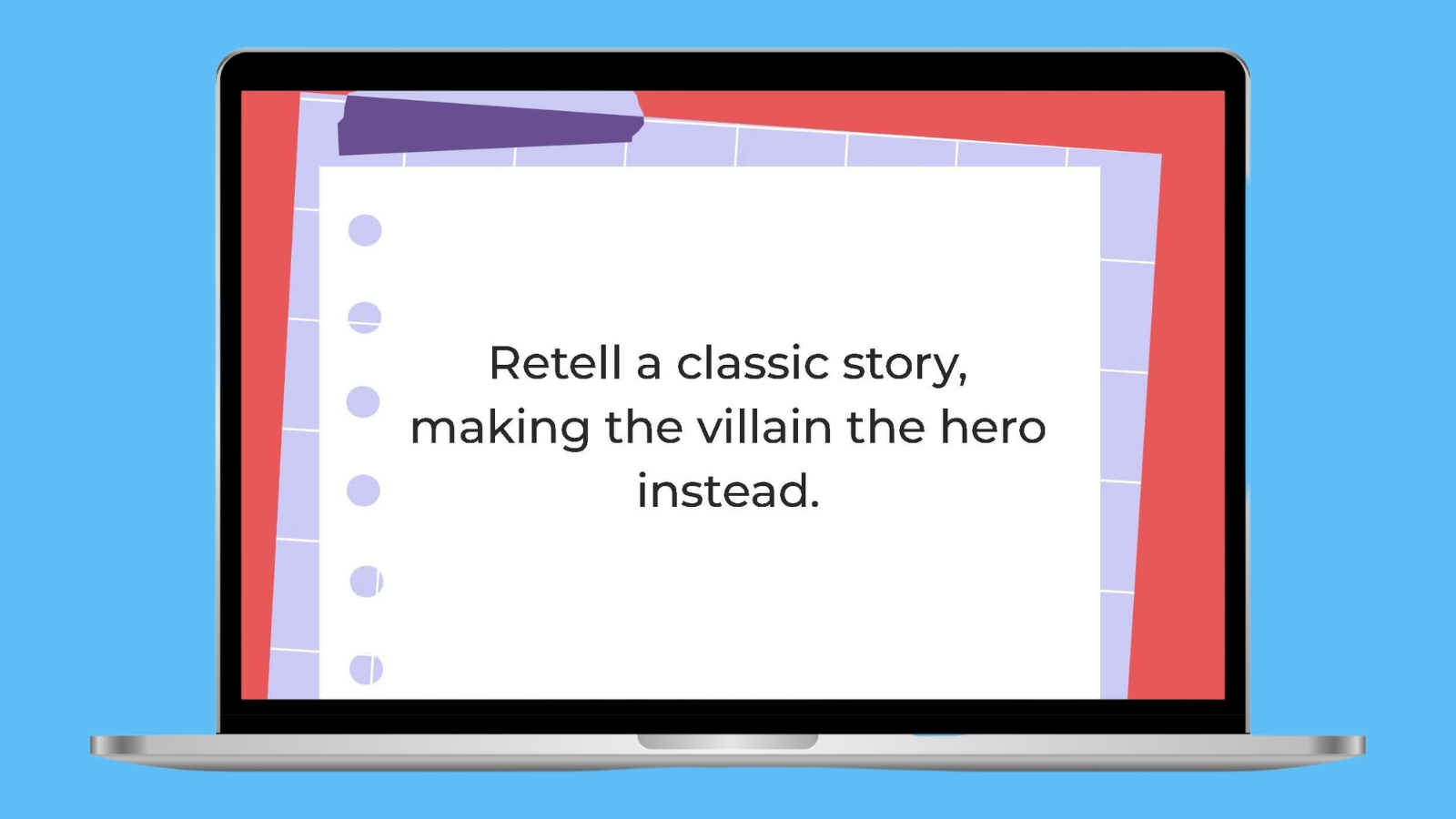
Imagine that one day you woke up and found everyone in the world could no longer talk. What would happen next?
Write a new chapter of your favorite book, with yourself as a new character.
Imagine you woke up one morning with a superpower, like invisibility or the ability to fly. Describe your experiences learning how to use that power.
Use these words to start a story: “When I opened the box that came in the mail, I never expected to find …”
Describe a world where it rains fruit juice and snows M&Ms.
Come up with the most ridiculous excuse possible for why you are unable to turn in your homework today.
Describe a world where all the adults are robots, but kids are still human kids.
Imagine a conversation between yourself and a talking animal.
Describe the kind of creature you’d create if you were a mad scientist. Would it be scary and mean? Nice and friendly?
Invent a new kind of candy. Give it a name, and write a commercial jingle for it.
Write about a day where kids are in charge instead of grown-ups.
Imagine you’re lost in a haunted wood, and tell the story of your escape.
Tell a story that ends with these words: “… and that’s how we all learned to fly.”
Describe a night in the life of the tooth fairy.
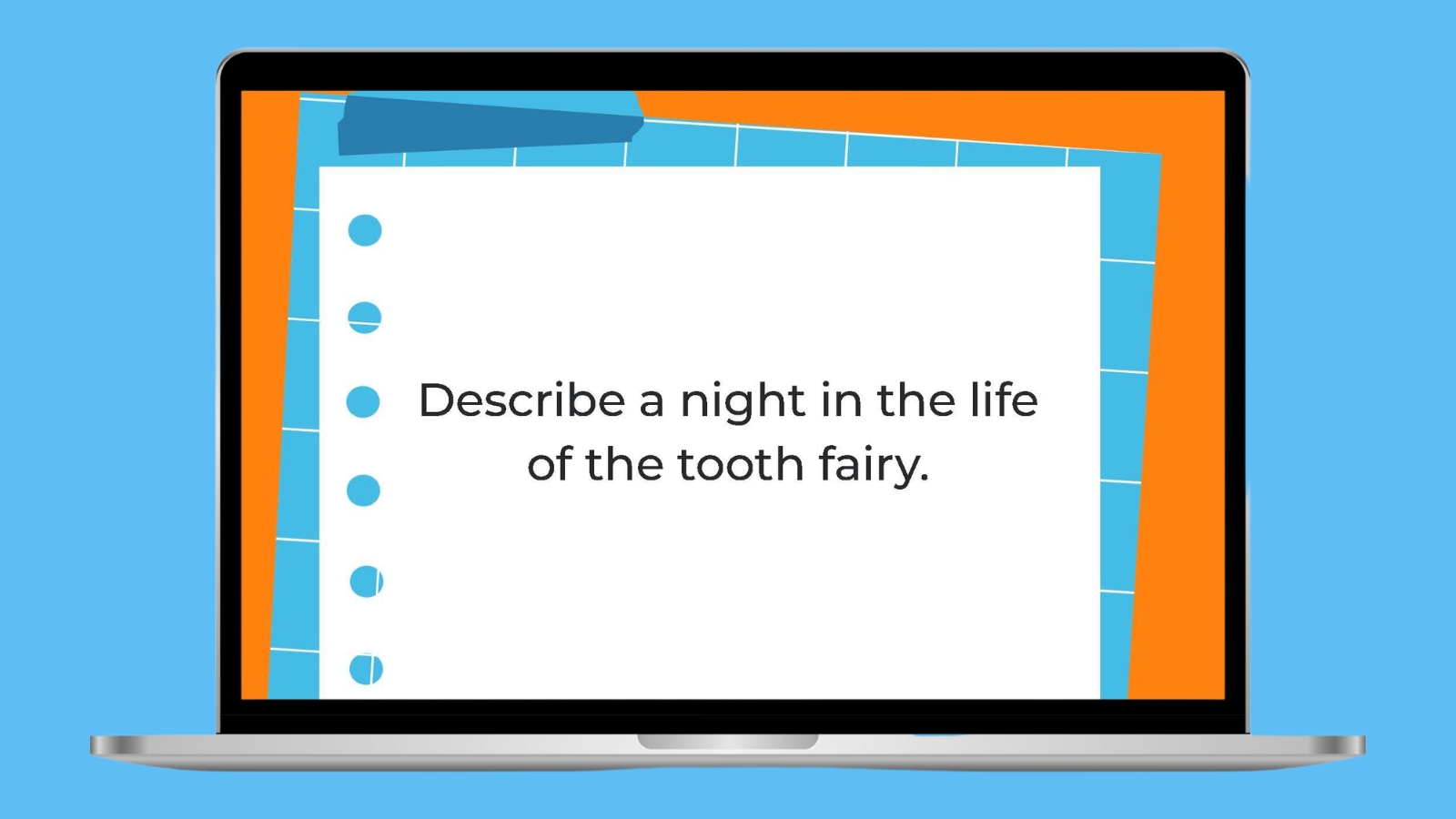
Current Events 4th Grade Writing Prompts
If you made a time capsule for this year, what would you put in it?
Describe something that you saw in the news recently and how it made you feel.
Tell about an event that happened recently at your school or in your town.
What do you think is one of the world’s biggest problems right now, and how would you solve it?
Read a news story about something happening in another country and summarize it.
Write a news article about something important that happened to you this week.
Create a poem about something in the local news right now.
Write a letter to the editor about a current issue, explaining your opinion.
Find a “good news” story, and share why it makes you happy.
What living famous person do you most admire and why?
What do you think kids today can do about climate change and global warming?
Learn about an endangered animal, and describe what we can do to help it.
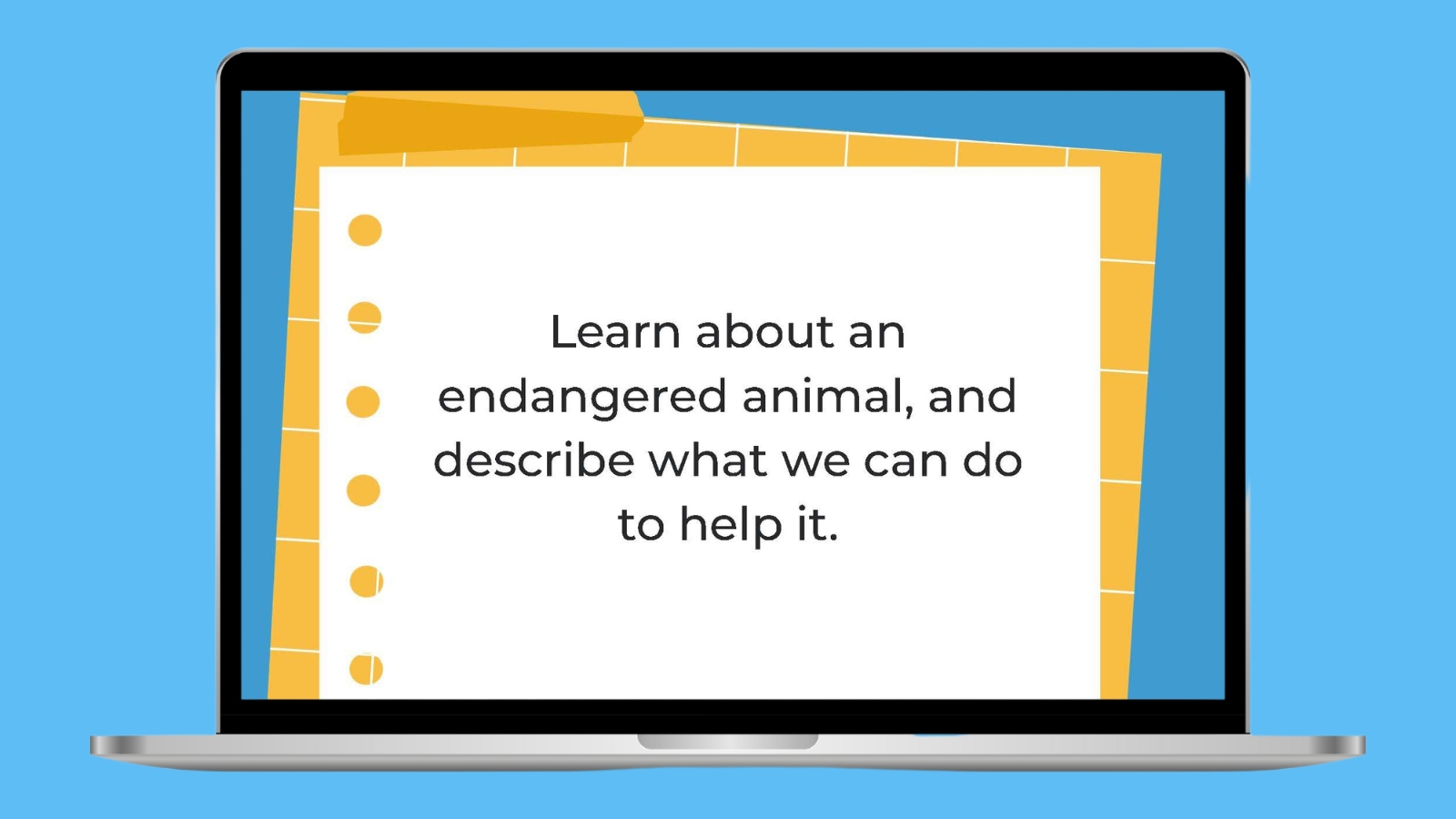
What does the word “racism” mean to you?
What is one thing you would do to make your school or town a better place?
Choose an upcoming sports event, and explain who you think will win.
Describe a current fashion trend or something that’s very popular in your school right now, and how you feel about it.
What can we do to help people with different opinions get along with one another better?
Interview a grown-up you know, and write a news article about them.
What do you think is the best new song right now? The worst? Why?
Describe an event that’s happening in the world right now that you don’t understand. What questions would you ask a grown-up about it?
How do you use writing prompts with your students? Come share your ideas and ask for advice in the We Are Teachers HELPLINE group on Facebook .
Also check out 57 awesome 4th grade books you’ll want to share with students ..
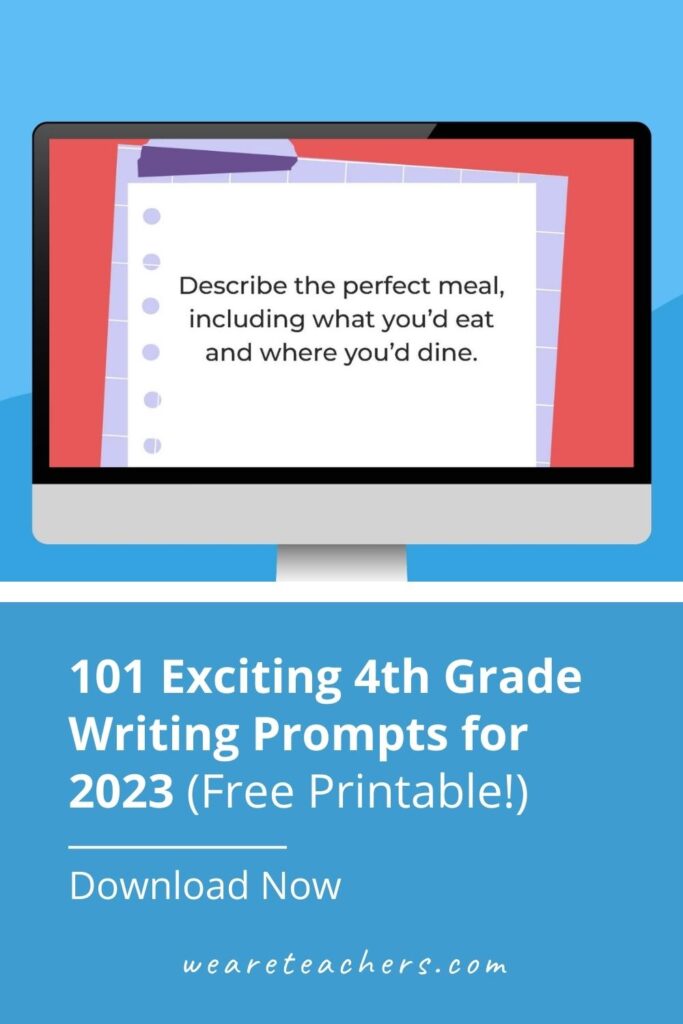
You Might Also Like
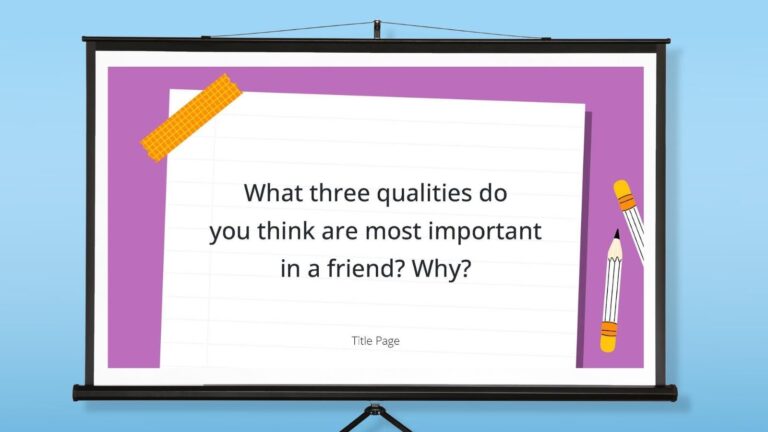
75 Creative Fifth Grade Writing Prompts (Free Slides!)
Get them excited to write every day! Continue Reading
Copyright © 2024. All rights reserved. 5335 Gate Parkway, Jacksonville, FL 32256

How to write a perfect 5 Paragraph Essay
How to Write a 5 Paragraph Essay : A Complete Guide
Essay writing can be the bane of many a student’s life.
Gone are the days when many students tried writing in big letters to fill the allotted number of pages with minimal effort quickly.
Now, it’s all constant word count checks and taking a dozen words to say what could be said in three.
Of course, it doesn’t have to be like this. When students have a clear, set structure to follow, essay writing can be a much less painful experience. Indeed, it can even be enjoyable!
In this article, we’ll outline a clear template our students can follow to produce a well-organised essay on practically any topic effectively.
Let’s get started!

THE HAMBURGER ESSAY – THE STUDENT’S FRIEND

The common 5 paragraph essay structure is often referred to as the hamburger essay . And this is a memorable way to communicate the concept to your students.
The hamburger essay structure consists of five paragraphs or layers as follows:
Layer 1 – The Top Bun: The Introduction
The uppermost layer is the introductory paragraph which communicates to the reader the purpose of the essay.
Layers 2,3, & 4 – The Meat Patties: The Body Paragraphs
These are the meat patties of the essay and each paragraph makes an argument in support of the essay’s central contention as expressed in the introduction.
Layer 5 – The Conclusion: The Bottom Bun
The bottommost layer is the conclusion, where the arguments are summed up and the central contention of the essay is restated forcefully one last time. We have a complete guide to writing a conclusion here .
Soon, we’ll take a closer look at each of these parts in turn. But, there is more to an essay than just the writing of it. There are also the prewriting and post writing stages to consider. We will look at all these aspects in this article, but first, let’s examine what our students need to be doing before they even begin to write their essays.
A COMPLETE UNIT ON TEACHING PARAGRAPH WRITING

This complete PARAGRAPH WRITING UNIT takes students from zero to hero over FIVE STRATEGIC LESSONS to improve PARAGRAPH WRITING SKILLS through PROVEN TEACHING STRATEGIES.
THE PREWRITING STAGE – DEFINING THE THESIS STATEMENT, RESEARCH & PLANNING
The thesis statement.
Every essay needs a clear focus. This focus is usually defined in a thesis statement that presents the topic of the essay in a sentence or two. The thesis statement should also include the writer’s stance on that topic.
As this will help guide the direction of the essay, it is essential that our students define their thesis statement before they begin the writing process.
Sometimes during the process of writing, we find out what we think about a given topic. The writing process can act as a kind of reflection on the merits of the various arguments, before finally revealing to us our own opinion. This is writing as a method of discovery.
Usually, though, it is more efficient for students to decide on their opinions prior to beginning to write.
Defining their thesis statement early on not only helps guide the students writing, but helps ensure their research is focused and efficient at the crucial prewriting stage.
Research & Planning
As students begin their research and gather their evidence to support their thesis statement, they should also be encouraged to pay particular attention to the counterarguments they come across.
A well-written essay does not ignore opposing viewpoints, students should be taught to preempt counterarguments where possible so as to strengthen the power of their own arguments. Good research is essential for this.
Not so long ago, research meant hours in dusty libraries being constantly shushed, but with the advent of the internet, there is now a wealth of knowledge right at our fingertips (and the end of a good Wifi connection).
While this has made research a much more convenient process, students need to be reminded of the importance of seeking out reliable sources to support their opinions. In an era of ‘fake news’, this is more important now than ever.
As students gather the information and supporting evidence for their essay, they’ll need to organize it carefully. Graphic organizers are an effective way of doing this, either on a paper printout or by using a premade template on the computer.
It can also be helpful for students to sort their collected information according to where they intend to use it in the five-paragraph outline or layers mentioned above.
Finally, while good research, organization, and planning are essential for producing a well-written essay, it’s important that students are reminded that essay writing is also a creative act.
Students should maintain an open mind when it comes to the writing process. They should allow their thoughts and opinions the room to develop over the course of writing their essay. They should leave the door open for including new thoughts and ideas as the writing progresses.
The Writing Stage: Introduction, Body Paragraphs, & Conclusion
The introduction.
A good introduction paragraph serves a number of important functions. It:
- Grabs the reader’s attention and interest, known as the hook
- Orientates the reader to the essays central argument, the thesis statement
- Outlines briefly the arguments that will be explored in support of the thesis statement.
To become an effective writer, it is important that our students learn the importance of grabbing the reader’s attention, as well as keeping it. Opening with a ‘hook’ or a ‘grabber’ is a great way to achieve this.
There are a number of techniques students can use here. Let’s take a look at some of the more common ones.
- The Surprising Fact – this can intrigue the reader to want to find out more, especially if it challenges some of their existing assumptions on a topic.
- The Quotation – a carefully selected quotation can be a great way to secure the reader’s attention and there are many curated quotation collections freely available online to help get students started.
- The Joke – this opening should be used judiciously as for some topics it may not be an appropriate way to open. In the right context however, humor can be a great way to engage the reader from the outset.
- The Anecdote – anecdotes are a great way to personally connect with the essay’s topic. They are a helpful way of climbing down the ladder of abstraction when exploring more theoretical arguments. They assist the reader in relating universal themes to their own lives.
Practice Activity 1:
To encourage students to develop strong opening paragraphs in their essays, it can be helpful to isolate writing opening paragraphs.
In this activity, provide your students with a list of essay topics and challenge them to write four different opening paragraphs for their essay, one each for The Surprising Fact , The Quotation , The Joke , and The Anecdote as listed above.
When students have completed their four paragraphs, they can then share with each other in groups and discuss which worked best and why.
This activity will help students to remember the different types of opening and how they work. It will also give them a feel for which openings work best for different types of essays.
We’ve already discussed what a thesis statement is and what it is intended to achieve, but where does it fit into the overall shape of the introductory paragraph exactly?
While there are no hard and fast rules here, thesis statements work well towards the end of the introductory paragraph – especially as the paragraph’s final sentence.
Readers are often hardwired to look for the thesis statement there. It connects the arguments that follow in the body paragraphs to the preceding sentences and contextualizes the essay for the reader.
THE BODY PARAGRAPHS
Now we get to the ‘meat’ of our essay. Each of the body paragraphs will explore one of the arguments supporting the thesis statement as laid out in the introduction.
While we are focused on the 5 paragraph essay here, longer essays will usually be constructed in exactly the same manner, they’ll just include more body paragraphs to cover the extra level of detail.
Generally, each body paragraph will open by stating the argument, with subsequent sentences supporting that argument by providing evidence along with some further explanation. Finally, a statement or phrase will help transition to the next paragraph.
The PEEL Paragraph Writing Process
The acronym PEEL can be a very useful tool to help students to understand how to organize each of their body paragraphs.
P oint : start the paragraph by expressing the central argument
E vidence : support the central argument of the paragraph by providing evidence or reasons. Evidence may come in many forms including facts and statistics, quotations from a text or other authority, reference to historical events etc.
E xplanation : explain how the evidence provided supports the paragraph’s central argument.
L ink : provide a transition into the next paragraph by linking this argument and the central thesis to the next point to be made.

Practice Activity 2:
Just as students isolated the opening to their introductory paragraph for practice purposes, in this activity they’ll isolate a single argument on a chosen essay topic.
When they have chosen a topic and selected a single argument related to that topic, they can begin to write one body paragraph using the PEEL structure outlined above.
This activity works well when several students write on the same argument. When each has completed their paragraphs, they can then compare the results with each other.
It can be a fascinating experiment that allows the students to see just how diverse different treatments of the same argument using the same PEEL formula can be – there is freedom within the discipline of the structure!
THE CONCLUSION
The purpose of the conclusion is to close the circle of the essay. It is a chance for the writer to restate the thesis statement, summarize the main arguments, and tie up any loose ends as the writer drives home their point one last time.
At this stage of the game, no new arguments should be introduced. However, students should revisit the previous arguments made in the body paragraphs and it is acceptable to offer up a new insight or two on these.
The student should take care here to make sure they leave no doubt in the reader’s mind that the essay question is fully answered. One useful way of doing this is by incorporating words and phrases from the essay question into the conclusion itself.
To help students grasp the underlying structure of a concluding paragraph, the following sequential structure is useful to keep in mind:
- Starts with a closing phrase such as In conclusion , There is no doubt , Finally etc
- Restates the main thesis statement
- Summarizes the main point of each of the body paragraphs
- Leaves the reader with something to think about.
Practice Activity 3:
Again, here we will isolate the concluding paragraph for focused practice.
Students select a topic they know well, decide what they think about that topic, write down a few key arguments, and then begin writing a concluding paragraph to an essay on that topic.
Students should use the template above to structure that material.
You could also include an element of peer assessment here by having students swap their paragraphs with each other, before offering each other feedback.
The Post Writing Stage: Editing & Proofreading YOUR 5 paragraph ESSAY
The final stage of writing a five-paragraph essay is perhaps the least glamorous of an unglamorous process, but no less essential for it – the editing and proofreading.
Often, our students overlook this stage. After completing the process of research, planning, and writing their five-paragraph essay, they let themselves down at this final, crucial stage.
Frequently, students fail to adequately edit and proofread their work not just because of laziness, but because they are unsure of exactly what this process entails.
To avoid this, ensure students understand that editing and proofreading involve reading through and correcting mistakes in the following areas one after the other:
- Text Organisation: title, headings, layout etc
- Sentence Structure: coherence, grammar , sentence variety etc
- Word Choice: suitable word choices, avoid repetition etc
- Spelling and Punctuation: accuracy in both areas.
Practice Activity 4:
Once students have completed their essays, appoint each a partner to work with and each then edits and proofreads the other person’s work.
Sometimes students struggle to gain the necessary distance from their own work to adequately edit and proofread it, this exercise overcomes that issue while giving them an opportunity to gain some valuable editing and proofreading experience that will benefit them in future.
CLOSING THE CIRCLE
So, there you have it – how to write a five-paragraph essay from start to finish. As with anything, the more practice students get, the quicker they will improve.
But, bear in mind too that writing essays is hard work and you don’t want to put students off.
The best way to provide opportunities for students to develop the various skills related to essay writing is to isolate them in the manner apparent in the activities described above.
This way, students can soon sharpen up their skills, without learning to dread the word ‘essay’ itself!

Teaching Resources
Use our resources and tools to improve your student’s writing skills through proven teaching strategies.

Five Paragraph Essay exampleS (Student Writing Samples)
Below are a collection of student writing samples of 5 paragraph essays. Click on the image to enlarge and explore them in greater detail. Please take a moment to both read the 5 paragraph essay in detail but also the teacher and student guides which highlight some of the key elements of this structured model of essay writing here.
Please understand these student writing samples are not intended to be perfect examples for each age or grade level but a piece of writing for students and teachers to explore together to critically analyze to improve student writing skills and deepen their understanding of 5 paragraph essay writing.
We would recommend reading the example either a year above and below, as well as the grade you are currently working with to gain a broader appreciation of this text type.

5 PARAGRAPH ESSAY VIDEO TUTORIALS

Weekly Essay Practice for 4th and 5th Grade
Class Experience
Us grade 4 - 5, beginner - intermediate level, follows teacher-created curriculum, aligned with common core state standards (ccss) .css-1gf0lzu{-webkit-user-select:none;-moz-user-select:none;-ms-user-select:none;user-select:none;width:1em;height:1em;display:inline-block;fill:currentcolor;-webkit-flex-shrink:0;-ms-flex-negative:0;flex-shrink:0;-webkit-transition:fill 200ms cubic-bezier(0.4, 0, 0.2, 1) 0ms;transition:fill 200ms cubic-bezier(0.4, 0, 0.2, 1) 0ms;font-size:inherit;vertical-align:-0.125em;color:#380596;margin-left:0.4rem;} .css-1mb7kpc{z-index:1500;pointer-events:none;z-index:9999;}.css-1mb7kpc[data-popper-placement*="bottom"] .muitooltip-arrow{top:0;margin-top:-0.71em;}.css-1mb7kpc[data-popper-placement*="bottom"] .muitooltip-arrow::before{transform-origin:0 100%;}.css-1mb7kpc[data-popper-placement*="top"] .muitooltip-arrow{bottom:0;margin-bottom:-0.71em;}.css-1mb7kpc[data-popper-placement*="top"] .muitooltip-arrow::before{transform-origin:100% 0;}.css-1mb7kpc[data-popper-placement*="right"] .muitooltip-arrow{left:0;margin-left:-0.71em;height:1em;width:0.71em;}.css-1mb7kpc[data-popper-placement*="right"] .muitooltip-arrow::before{transform-origin:100% 100%;}.css-1mb7kpc[data-popper-placement*="left"] .muitooltip-arrow{right:0;margin-right:-0.71em;height:1em;width:0.71em;}.css-1mb7kpc[data-popper-placement*="left"] .muitooltip-arrow::before{transform-origin:0 0;} .css-fzkdwq{z-index:9999;z-index:1500;pointer-events:none;z-index:9999;}.css-fzkdwq[data-popper-placement*="bottom"] .muitooltip-arrow{top:0;margin-top:-0.71em;}.css-fzkdwq[data-popper-placement*="bottom"] .muitooltip-arrow::before{transform-origin:0 100%;}.css-fzkdwq[data-popper-placement*="top"] .muitooltip-arrow{bottom:0;margin-bottom:-0.71em;}.css-fzkdwq[data-popper-placement*="top"] .muitooltip-arrow::before{transform-origin:100% 0;}.css-fzkdwq[data-popper-placement*="right"] .muitooltip-arrow{left:0;margin-left:-0.71em;height:1em;width:0.71em;}.css-fzkdwq[data-popper-placement*="right"] .muitooltip-arrow::before{transform-origin:100% 100%;}.css-fzkdwq[data-popper-placement*="left"] .muitooltip-arrow{right:0;margin-right:-0.71em;height:1em;width:0.71em;}.css-fzkdwq[data-popper-placement*="left"] .muitooltip-arrow::before{transform-origin:0 0;}.
- Learners will strengthen their essay-writing skills.
- Learners will identify the basic essay types.
0 - 1 hours per week outside of class
- Google Docs
Teacher expertise and credentials
2 teaching certificates, arkansas teaching certificate .css-1x99zyk{margin:0;font-family:ginto normal,sans-serif;font-size:1.6rem;line-height:1.5;font-weight:400;letter-spacing:0;} in elementary education, arkansas teaching certificate in elementary education, doctoral degree from capella university, master's degree in early childhood education from harding university, bachelor's degree in elementary education from liberty university, group class, financial assistance , outschool international , get the app .

More to Explore
Classes by age , classes by grade .
Five-Paragraph Essay Lesson Plan: Producing Writing
*Click to open and customize your own copy of the Five-Paragraph Essay Lesson Plan .
This lesson accompanies the BrainPOP topic, Five-Paragraph Essay , and supports the standard of developing an organized piece of writing with a clear thesis, relevant details, and a concluding statement. Students demonstrate understanding through a variety of projects.
Step 1: ACTIVATE PRIOR KNOWLEDGE
As a class, or individually, have students read Tim’s model essay, The Case For a Longer School Year. Ask:
- What argument is Tim making in his essay?
- What are his reasons or evidence for his argument?
- Is Tim’s argument persuasive? Why or why not?
- What is the purpose of the first paragraph? middle paragraphs? Last paragraph?
Step 2: BUILD KNOWLEDGE
- Read aloud the description on the Five-Paragraph Essay topic page .
- Play the Movie , pausing to check for understanding.
Step 3: APPLY and ASSESS
Assign the Five-Paragraph Essay Quiz , prompting students to apply essential literacy skills while demonstrating what they learned about this topic.
Step 4: DEEPEN and EXTEND
Students express what they learned about writing five-paragraph essays while practicing essential literacy skills with one or more of the following activities. Differentiate by assigning ones that meet individual student needs.
- Make-a-Movie : Produce a movie where you present a persuasive argument that follows the format of a five-paragraph essay.
- Make-a-Map : Create a concept map that shows the features of each paragraph in a five-paragraph essay.
- Creative Coding : Code a meme that shows the benefits of using the five-paragraph essay format.
More to Explore
Related BrainPOP Topics : Deepen understanding of the writing process with these topics: Types of Writing , Writing in Sequence , Research , and Outlines .
Teacher Support Resources:
- Pause Point Overview : Video tutorial showing how Pause Points actively engage students to stop, think, and express ideas.
- Learning Activities Modifications : Strategies to meet ELL and other instructional and student needs.
- Learning Activities Support : Resources for best practices using BrainPOP.
Lesson Plan Common Core State Standards Alignments

- BrainPOP Jr. (K-3)
- BrainPOP ELL
- BrainPOP Science
- BrainPOP Español
- BrainPOP Français
- Set Up Accounts
- Single Sign-on
- Manage Subscription
- Quick Tours
- About BrainPOP

- Terms of Use
- Privacy Policy
- Trademarks & Copyrights
The Ultimate Guide to the 5-Paragraph Essay
PeopleImages / Getty Images
- M.Ed., Education Administration, University of Georgia
- B.A., History, Armstrong State University
A five-paragraph essay is a prose composition that follows a prescribed format of an introductory paragraph, three body paragraphs, and a concluding paragraph, and is typically taught during primary English education and applied on standardized testing throughout schooling.
Learning to write a high-quality five-paragraph essay is an essential skill for students in early English classes as it allows them to express certain ideas, claims, or concepts in an organized manner, complete with evidence that supports each of these notions. Later, though, students may decide to stray from the standard five-paragraph format and venture into writing an exploratory essay instead.
Still, teaching students to organize essays into the five-paragraph format is an easy way to introduce them to writing literary criticism, which will be tested time and again throughout their primary, secondary, and further education.
Writing a Good Introduction
The introduction is the first paragraph in your essay, and it should accomplish a few specific goals: capture the reader's interest, introduce the topic, and make a claim or express an opinion in a thesis statement.
It's a good idea to start your essay with a hook (fascinating statement) to pique the reader's interest, though this can also be accomplished by using descriptive words, an anecdote, an intriguing question, or an interesting fact. Students can practice with creative writing prompts to get some ideas for interesting ways to start an essay.
The next few sentences should explain your first statement, and prepare the reader for your thesis statement, which is typically the last sentence in the introduction. Your thesis sentence should provide your specific assertion and convey a clear point of view, which is typically divided into three distinct arguments that support this assertation, which will each serve as central themes for the body paragraphs.
Writing Body Paragraphs
The body of the essay will include three body paragraphs in a five-paragraph essay format, each limited to one main idea that supports your thesis.
To correctly write each of these three body paragraphs, you should state your supporting idea, your topic sentence, then back it up with two or three sentences of evidence. Use examples that validate the claim before concluding the paragraph and using transition words to lead to the paragraph that follows — meaning that all of your body paragraphs should follow the pattern of "statement, supporting ideas, transition statement."
Words to use as you transition from one paragraph to another include: moreover, in fact, on the whole, furthermore, as a result, simply put, for this reason, similarly, likewise, it follows that, naturally, by comparison, surely, and yet.
Writing a Conclusion
The final paragraph will summarize your main points and re-assert your main claim (from your thesis sentence). It should point out your main points, but should not repeat specific examples, and should, as always, leave a lasting impression on the reader.
The first sentence of the conclusion, therefore, should be used to restate the supporting claims argued in the body paragraphs as they relate to the thesis statement, then the next few sentences should be used to explain how the essay's main points can lead outward, perhaps to further thought on the topic. Ending the conclusion with a question, anecdote, or final pondering is a great way to leave a lasting impact.
Once you complete the first draft of your essay, it's a good idea to re-visit the thesis statement in your first paragraph. Read your essay to see if it flows well, and you might find that the supporting paragraphs are strong, but they don't address the exact focus of your thesis. Simply re-write your thesis sentence to fit your body and summary more exactly, and adjust the conclusion to wrap it all up nicely.
Practice Writing a Five-Paragraph Essay
Students can use the following steps to write a standard essay on any given topic. First, choose a topic, or ask your students to choose their topic, then allow them to form a basic five-paragraph by following these steps:
- Decide on your basic thesis , your idea of a topic to discuss.
- Decide on three pieces of supporting evidence you will use to prove your thesis.
- Write an introductory paragraph, including your thesis and evidence (in order of strength).
- Write your first body paragraph, starting with restating your thesis and focusing on your first piece of supporting evidence.
- End your first paragraph with a transitional sentence that leads to the next body paragraph.
- Write paragraph two of the body focussing on your second piece of evidence. Once again make the connection between your thesis and this piece of evidence.
- End your second paragraph with a transitional sentence that leads to paragraph number three.
- Repeat step 6 using your third piece of evidence.
- Begin your concluding paragraph by restating your thesis. Include the three points you've used to prove your thesis.
- End with a punch, a question, an anecdote, or an entertaining thought that will stay with the reader.
Once a student can master these 10 simple steps, writing a basic five-paragraph essay will be a piece of cake, so long as the student does so correctly and includes enough supporting information in each paragraph that all relate to the same centralized main idea, the thesis of the essay.
Limitations of the Five-Paragraph Essay
The five-paragraph essay is merely a starting point for students hoping to express their ideas in academic writing; there are some other forms and styles of writing that students should use to express their vocabulary in the written form.
According to Tory Young's "Studying English Literature: A Practical Guide":
"Although school students in the U.S. are examined on their ability to write a five-paragraph essay , its raison d'être is purportedly to give practice in basic writing skills that will lead to future success in more varied forms. Detractors feel, however, that writing to rule in this way is more likely to discourage imaginative writing and thinking than enable it. . . . The five-paragraph essay is less aware of its audience and sets out only to present information, an account or a kind of story rather than explicitly to persuade the reader."
Students should instead be asked to write other forms, such as journal entries, blog posts, reviews of goods or services, multi-paragraph research papers, and freeform expository writing around a central theme. Although five-paragraph essays are the golden rule when writing for standardized tests, experimentation with expression should be encouraged throughout primary schooling to bolster students' abilities to utilize the English language fully.
- 100 Persuasive Essay Topics
- Examples of Great Introductory Paragraphs
- How to Find the Main Idea
- How To Write an Essay
- Write an Attention-Grabbing Opening Sentence for an Essay
- How to Write a Great Essay for the TOEFL or TOEIC
- How to Write and Format an MBA Essay
- How to Structure an Essay
- Paragraph Writing
- How to Help Your 4th Grader Write a Biography
- What Is Expository Writing?
- What an Essay Is and How to Write One
- Definition and Examples of Body Paragraphs in Composition
- 3 Changes That Will Take Your Essay From Good To Great
- An Introduction to Academic Writing
- Definition and Examples of Analysis in Composition
Teaching the Five-Paragraph Essay Resource Packet
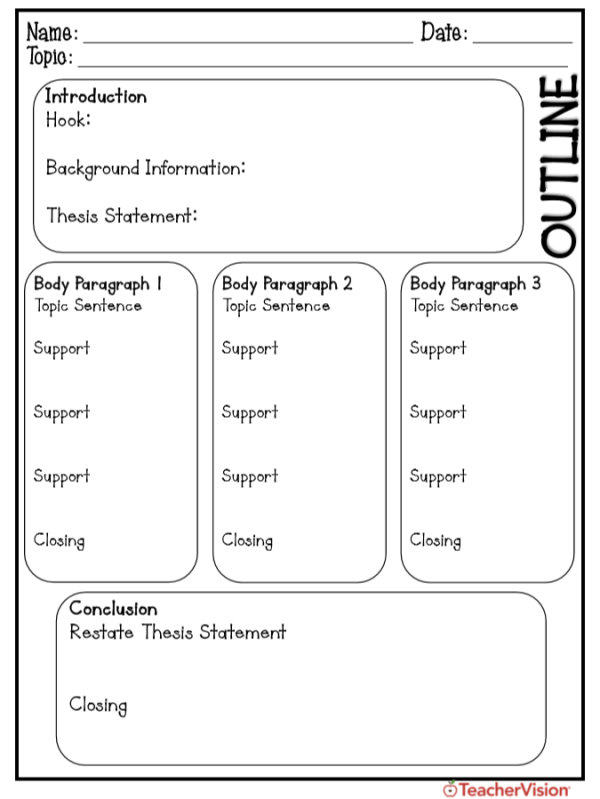
| Add to Folder | |
|---|---|
| creative writing | |
| children's book | |
| activities | |
| classroom tools | |
| language arts and writing | |
| vocabulary |
Featured 5th Grade Resources

Related Resources
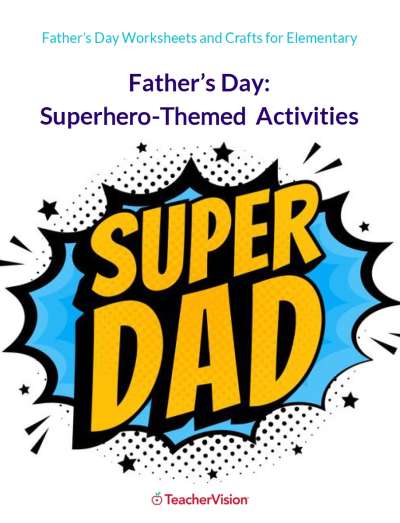
About the author

Contributor

How to Write a Fourth Grade Essay
Karen hollowell.

If you are a fourth grade student, you are just beginning to learn about composing an essay. You began writing words and short sentences in kindergarten and first grade, and learned how to combine sentences into a paragraph in second and third grade. In fourth grade, you will learn how to combine paragraphs into a composition. A basic essay is made of five paragraphs that discuss one topic. These paragraphs introduce, support, and conclude your information, but should do so in a way that another reader can easily understand.
Explore this article
- How To Write A Fourth Grade Essay
- Choose a topic
- Write the introduction
- Write the body of the essay
- Write the conclusion
- Proofread your essay
1 How To Write A Fourth Grade Essay
2 choose a topic.
Choose a topic. Sometimes the teacher may give you a list of topics, or you may have to brainstorm ideas. When deciding on a topic, focus on a specific subject. For example, if you want to write about dogs, choose one breed of dog or discuss characteristics of dogs that make them good pets.
3 Write the introduction
Write the introduction. This is the first paragraph of your essay. It will contain two or three sentences that tell the reader what you will be discussing in your composition. (Ref. 1.)
4 Write the body of the essay
Write the body of the essay. The body is usually three paragraphs that include details supporting your topic. For example, if your essay is about your favorite character in a novel, each paragraph should discuss one aspect of the character that relates to why he or she is your favorite.
5 Write the conclusion
Write the conclusion. The ending paragraph is similar to the introduction, but you do not use the same words. The conclusion needs to summarize the main point of your essay. For example, a conclusion for an essay about your favorite character in "Huckleberry Finn" might be written like this: "Jim is my favorite character in this novel because he remained brave even though he faced many dangers. He was also a good friend to Huck and helped him to see how bad slavery was."
6 Proofread your essay
Proofread your essay. Your teacher will probably guide you through this process until you know the procedure. Usually you will read your essay after you have written it to be sure the sentences support the topic. Delete or add details as necessary at this time. Then check for grammar mistakes like subject/verb agreement and spelling errors. It is also a good idea to get a classmate or someone at home to read your essay. They may be able to see things that you missed. They can also tell you if your writing was easy to understand.
- 1 Sample Five Paragraph Essay
About the Author
Karen Hollowell has been teaching since 1994. She has taught English/literature and social studies in grades 7-12 and taught kindergarten for nine years. She currently teaches fourth grade reading/language and social studies. Hollowell earned her Bachelor of Arts in English from the University of Mississippi and her Master of Arts in elementary education from Alcorn State University.
Related Articles

How to Write Opening Paragraphs

Good Ways to Start an Essay

How to Restate an Expository Writing Prompt

How to Write a Composition on the Figurative Language...

What Are the Writing Elements for a Personal Narrative?

What Is an Impromptu Essay?

What Does It Mean When a Girl Says She Likes You as...

How to Write an Introduction for an Argument Essay

Three Components of a Good Paragraph

What Do You Say to Someone Whose Loved One Has Died?

Steps for Going From Writing a Paragraph to Writing...


How to Summarize a Paragraph

How to Make an Outline for an Informative Essay

How to Deal With a Friend That Told a Secret

How to Make a Good Introduction Paragraph

How to Differentiate Between Vagueness and Ambiguity

8 Steps in Writing a Process Paragraph

How to Address a Letter to a Mayor

How to Write an Introduction for a Literary Analysis...

How to Write a Request for a Waiver for the Military
Regardless of how old we are, we never stop learning. Classroom is the educational resource for people of all ages. Whether you’re studying times tables or applying to college, Classroom has the answers.
- Accessibility
- Terms of Use
- Privacy Policy
- Copyright Policy
- Manage Preferences
© 2020 Leaf Group Ltd. / Leaf Group Media, All Rights Reserved. Based on the Word Net lexical database for the English Language. See disclaimer .

Reading & Math for K-5
- Kindergarten
- Learning numbers
- Comparing numbers
- Place Value
- Roman numerals
- Subtraction
- Multiplication
- Order of operations
- Drills & practice
- Measurement
- Factoring & prime factors
- Proportions
- Shape & geometry
- Data & graphing
- Word problems
- Children's stories
- Leveled Stories
- Sentences & passages
- Context clues
- Cause & effect
- Compare & contrast
- Fact vs. fiction
- Fact vs. opinion
- Main idea & details
- Story elements
- Conclusions & inferences
- Sounds & phonics
- Words & vocabulary
- Reading comprehension
- Early writing
- Numbers & counting
- Simple math
- Social skills
- Other activities
- Dolch sight words
- Fry sight words
- Multiple meaning words
- Prefixes & suffixes
- Vocabulary cards
- Other parts of speech
- Punctuation
- Capitalization
- Narrative writing
- Opinion writing
- Informative writing
- Cursive alphabet
- Cursive letters
- Cursive letter joins
- Cursive words
- Cursive sentences
- Cursive passages
- Grammar & Writing
Breadcrumbs

Download & Print Only $6.89
Informative writing for grade 4
Research and essays.
These worksheets introduce students to informative writing , including research, note taking, recording sources and writing essays.
Writing Introductions : Write hooks and topic sentences.
Supporting Details : Write details supporting the main ideas.
Writing informative paragraphs : Incorporate facts and examples into the text.
Writing informative essays : Plan and write an essay.
Compare and contrast writing : Compare and contrast two items.
Research writing : Research, take notes and write.
Biography writing : Research and write about a famous person.
Informative writing prompts : Prompts for informative essays.

Grade 4 informative writing worksheet
What is K5?
K5 Learning offers free worksheets , flashcards and inexpensive workbooks for kids in kindergarten to grade 5. Become a member to access additional content and skip ads.

Our members helped us give away millions of worksheets last year.
We provide free educational materials to parents and teachers in over 100 countries. If you can, please consider purchasing a membership ($24/year) to support our efforts.
Members skip ads and access exclusive features.
Learn about member benefits
This content is available to members only.
Join K5 to save time, skip ads and access more content. Learn More
- Forgot Password?
4th grade writing
by: Jessica Kelmon | Updated: August 4, 2022
Print article

In fourth grade, study skills play an important role in your child’s writing. Kids do research using multiple sources. They also learn to take notes on what they research, read. and hear. And even stories are more advanced, with more developed characters who show their feelings and react to what happens. And perhaps most important, your child is expected to analyze a book’s structure, logic, details, and evidence in their writing. It’s all pretty impressive!
Building 4th grade study skills
This year taking notes is an important skill. Fourth graders are expected to use books, periodicals, websites, and other digital sources to conduct research projects — both on their own and as part of group work with peers. Your child should keep track of all the sources they check — noting what they learn, the name of the source and page number or url so they can find it again and create a source list or bibliography later.
Also, taking notes while reading fiction will help your child when it comes time to analyze what they’ve read or to give an in-depth description of a character, setting, or story event drawing on specific details.
Check out this related worksheet: • Finding key points
bttr, better, best!
Last year’s prewriting step — planning — becomes more essential in your child’s writing process this year. Before your child sits down to write, they should use their organized notes to help create the structure of whatever they’re writing. While planning , your child may brainstorm ideas for a story or decide how to organize facts into a cohesive set of points. The more knowledge your child builds during the prewriting stage, the easier it will be to write. Encourage reading and rereading, taking notes, finding additional sources, discussing aloud how new knowledge fits in with what your child knew before, and visually organizing what they plan to write about. After the first draft is written, the teacher and possibly other students will offer feedback: asking questions to elicit new details or clarify an argument or suggest new sources of information. They should check that there’s a clear introduction and conclusion, and that the order of points or events makes sense. Your child will then do a revision (or two), adding, reordering, and refining their writing to show deep understanding.
After making revisions, your child does a final edit focusing on spelling, grammar, punctuation, and strengthening word choices. These steps — planning, writing a first draft, revising, and editing the final piece — help fourth graders understand that research, organizing, clarifying ideas, and improving grammar and presentation are all essential to strong writing.
See what your fourth grade writing looks like

Fourth grade writing: opinion pieces
Your child’s opinions always need to be supported by evidence. Persuasive writing should start by clearly introducing an opinion on a topic. To support their opinion, kids need to present their argument, which is a list of reasons why they hold that opinion. Each of their reasons needs to be supported by facts and details (a.k.a. evidence). After presenting all of their research-supported reasons, kids should close their arguments with a concluding statement or paragraph that sums up how their evidence supports their opinion.
Check out this example of good fourth grade opinion writing: • “ Zoos should close ”
Fourth grade writing: informative writing
This year, your child’s informative writing gets more organized, with headers, illustrations and even multimedia components to support specific points. To begin, your child should introduce the topic. Then they should use facts, definitions, details, quotes, examples, and other information to develop their topic into a few clear, well thought-out paragraphs. Your fourth grader should use advanced linking words (e.g. also, another, for example, because ) to form compound and complex sentences connecting their research and ideas to the point they’re making. Finally, to wrap it up, your child should have a conclusion — either a statement or, if necessary, a section labeled conclusion.
Check out these three examples of good fourth grade informational writing: • “ John Cabot and the Rediscovery of North America ” • “ Big Book of Evolution ” • “ Book report: A Tale of Despereaux ”
Can your fourth grader write an informational essay?

Fourth grade writing: narratives
A narrative means writing a story. This year your child will be expected to use storytelling techniques, descriptive details, and clear sequences to tell compelling tales. Whether inspired by a favorite book, real events, or your child’s imagination, your child’s story should use dialogue, descriptive words, and transitional language. Look for precise language and sensory details that bring characters to life. Finally, your child should keep pacing and sequence of events in mind. The events should unfold naturally, bringing the story to a natural conclusion. Are surprise endings okay? Sure… so long as the details and events plausibly lead there.
Check out this related worksheet: • Putting sentences in order
Gettin’ good at grammar
You may want to review all those parts of speech your child learned last year because fourth grade grammar is expected to be quite accurate. Your child should know relative pronouns (e.g. who, whose, whom, which, that ), relative adverbs (e.g. where, when, why ), adjective ordering (e.g. short dark hair and small red bag ), descriptive prepositional phrases (e.g. in the air, down the block, on the grass ), progressive past, present, and future verbs (e.g. I was walking, I am walking, I will be walking ), and verbs used with other verbs to express mood or tense (aka modal auxiliaries, e.g. can, may, must, should, would ). Also, your child needs to master the distinctions between frequently confused words like to , too , and two and there , their , and they’re . Finally, your child should be able to recognize and correct run-on sentences.
Check out these related worksheets: • Prepositions • Compound sentences • Punctuating a paragraph • Its or it’s?
Learning to use language precisely
This means:
- Recognizing and explaining common idioms (e.g. bending over backwards )
- Distinguishing between similes and metaphors (e.g. quiet as a mouse and the sun is a yellow beach ball ).
- Identifying and using synonyms and antonyms
- Using increasingly specific words in writing (e.g. glamorous instead of pretty, pre-dawn instead of morning, quizzed instead of asked )
Your fourth grader should now be using relevant academic words in informational writing and research reports. Although accurate spelling should be the norm in fourth grade, when faced with spelling more academic words, your child should use a dictionary and thesaurus (print and digital versions).
Check out these related worksheets: • 4th grade weekly spelling lists • Making metaphors • Simile or cliché?
Sharing their work
Most classrooms will encourage (if not require) kids to use technology to produce and publish their writing. Your fourth grader should be able to type up to a full page in one sitting. While teachers should be there to help, your child should be doing the work. Students will also be expected to interact with peers about each other’s work. What might that look like? Your child might read a classmates’ published work online and comment on it, or cite a peer’s work when answering a question in class.
Updated August 2022

Homes Nearby
Homes for rent and sale near schools

6 ways to improve a college essay

Quick writing tips for every age

Writing on the wall
Why parents must teach writing
Yes! Sign me up for updates relevant to my child's grade.
Please enter a valid email address
Thank you for signing up!
Server Issue: Please try again later. Sorry for the inconvenience
Reading Worksheets, Spelling, Grammar, Comprehension, Lesson Plans
4th Grade CCSS: Writing
For fourth graders, this Common Core area helps students gain mastery of writing skills by working collaboratively and producing written texts, understanding syntax and vocabulary, and organizing their ideas. Among the complete standards for this grade, fourth graders will be asked to: write opinion pieces, explanatory texts, narratives, be able to effectively write introductions, supporting details, developed ideas, reasons, and conclusions to fully realize a piece of writing, properly use illustrations, formatting, and multimedia to enhance a text, use dialogue, and descriptions of emotions and thoughts to show the response of characters to situations, use transitional words to link events in a narrative, with some adult guidance use appropriate technology to publish writing, demonstrate keyboarding skill, understand writing for specific audiences, go through the process of writing, editing and revision for their written work.
Autumn: The Scarecrow’s Surprise Writing Prompt
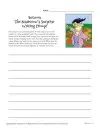
Students will further develop their creative writing skills with this Autumn writing prompt activity. This is a great worksheet to keep your students’ creativity flowing!
Classroom Reporter: Interview with a Classmate
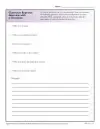
“Classroom Reporter: Interview with a Classmate” is the perfect way to introduce students to their classmates and learn more about one another.
Father’s Day Writing Prompt: He’s the Best
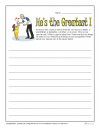
Your students will have fun writing about their father in this “He’s the Best” writing activity.
Fourth of July Writing Prompt: What Freedom Means to Me
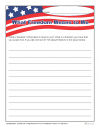
Teach your students about freedom in America with this fun Fourth of July Writing Prompt printable worksheet.
Haiku: Write Your Own!
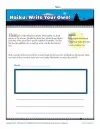
This worksheet features the Japanese poetry style haiku.
Kwanzaa Candles: Who Lights First? Writing Prompt

It’s the first night of Kwanzaa and the entire Thompson family has gathered for the celebration. It’s almost time to light the candles, and the question comes up: who should light the candles tonight? Write a story about how the Thompson family decides who will light the candles. This printable holiday writing prompt is ideal for 3rd – 5th grade, but can be used where appropriate.
Main Idea Graphic Organizer
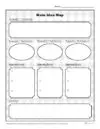
Learning how to properly structure an essay can be difficult. With this Main Idea Tree, students will create an outline that allows them to better understand the different parts of a five paragraph essay. Students will be asked to write their introduction, a main idea, three topic sentences, three supporting details for each topic sentence, and a conclusion.
Main Idea Tree
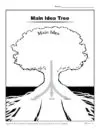
Use this image of a large tree to help your students understand the components of a paragraph. With this worksheet, students will be asked to write a main idea and follow it with three supporting details. What a great way for students to visualize the importance of the main idea in a paragraph!
My Goals for the New Year
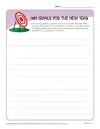
This writing prompt about New Year’s goals is a wonderful way to help your students practice their writing skills.
Native American Heritage: Create Your Totem Pole
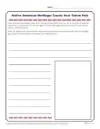
In the box on the worksheet, design your own totem pole. Make sure it represents you and your interests. Then in the writing space, describe your totem pole and explain how it illustrates you. This printable Native American Heritage Month activity is ideal for 3rd – 5th grade, but can be used where appropriate.
New Year’s Reflections

Encourage your students to look back on the events of the past year and look forward to the ones ahead with this New Years reflection worksheet.
The Lost Dreidel Writing Prompt
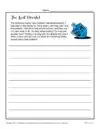
The Goldberg family has lost their Hanukkah dreidel! Write a story and tell how you think the Goldberg family should solve their problem. This printable Hanukkah writing prompt activity is perfect for keeping students engaged in class while learning about the holiday.
Using Story Elements: Plan a Story

Planning a story can be tough. This activity helps students break things down so that it’s easier to envision and write the story. A great beginning writing activity for 3rd – 5th graders.
What Happens Next? Halloween Surprise Activity
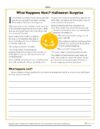
Keep learning fun during the holidays with this Halloween Reading Comprehension Activity. Students will be asked to read a passage and then answer the given questions about the story. This worksheet is great for use both at home and in the classroom.
Write a Description: Melting Snowman
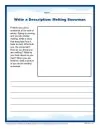
With this unique winter activity, help your students further develop their writing skills.
Write Rhyming Couplets
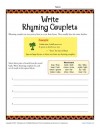
Time for some poetic rhyming couplets!
Writing Limericks

This activity lists opening lines for two limericks. Students write the other lines to complete the limerick, remembering which lines that need to rhyme.
Writing Prompt: A New Plant in Spring
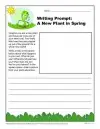
Students choose from the letters on a Spring flower and write words that start with a vowel. A fun way to practice vocabulary and anticipate the warm days to come!
Writing Prompt: She’s the Best

Students write about a special sister, grandmother, mother, or friend!
Back to School Diamante Poem
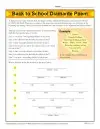
Teach your students a fun way to write diamante poems using our new back to school worksheet.
- Rating Count
- Price (Ascending)
- Price (Descending)
- Most Recent
Five paragraph informational essay grade 4
Resource type.

Informational Writing: 3 paragraph essay . Grades 4 , 5 , 6. NO PREP
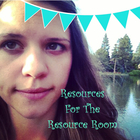
5 Paragraph Expository/ Informative Essay Bundle ( grades 4 -6)

Simplified Informative /Expository Essay Writing Outline ( grades 4 -6)
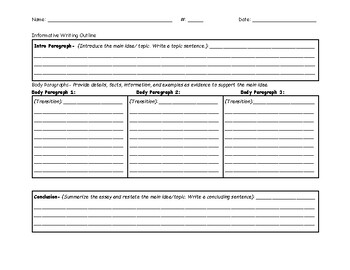
Informative /Expository Essay Writing Outline ( grades 4 -6)
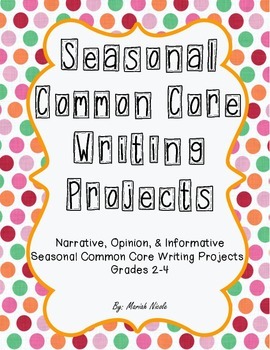
Seasonal Common Core Writing Bundle - Grades 2- 4

Paired Passages with Informational Writing Prompts 4th & 5th Grades -Adaptations

Paired Passages with Informational Writing Prompt on Women in STEM - 5th Grade

Wit and Wisdom Grade 4 Writing Posters

Articles - 5 : Hi-Lo Texts - DINOSAURS - GRIFFINFLIES & MORE - RL: Grade 2

The Structure of an Essay Color-Coded W/ 5 - PARAGRAPHS ( INFORMATIONAL /EXPOSITORY)

Informative Report and Essay Writing: A Step-by-Step Teacher's Guide
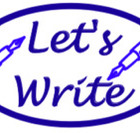
4 +1 Square Writing Graphic Organizer

Natural Disasters Project Editable Nonfiction Writing Task

Text Based Essay Informational Writing on Bees Differentiated Paired Passages

The 5 - Paragraph Essay Rubric

St. Patrick's Day Scaffolded Informative Writing: Why I'm Lucky

Yelp Informational Opinion Writing Project for Grades 4 , 5 , 6 | Digital Google

Informative and Argumentative Essay Structure Task Cards Printable and Digital
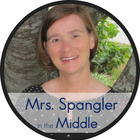
Natural Disasters Informational /Expository Research and Essay

New Year's Resolution Scaffolded Informative Writing
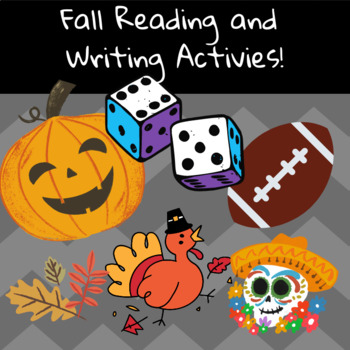
Fall Reading and Writing Activities: Comprehension, Essay -Writing, and More!

Informational Writing BUNDLE Rubric, Graphic Organizer, & Peer Editing Templates

Informational Writing on Integrity - Great for beginning of school/Behavior!

The Five Paragraph Analytical Essay Lesson Bundle

- We're hiring
- Help & FAQ
- Privacy policy
- Student privacy
- Terms of service
- Tell us what you think
Filter Results
- clear all filters
Resource Type
- Worksheets
- Guided Lessons
- Lesson Plans
- Hands-on Activities
- Interactive Stories
- Online Exercises
- Printable Workbooks
- Science Projects
- Song Videos
middle-school
- Fine arts
- Foreign language
- Math
- Reading
- Writing Process
- Voice in Writing
- Sentence Variety
- Figurative Writing
- Paragraph Structure
- Persuasive Essay Structure
- Informative Essay Structure
- Narrative Essay Structure
- Writing a Strong Introduction
- Writing a Strong Ending
- Genre Writing
- Fiction Writing
- Nonfiction Writing
- Grammar
- Science
- Social emotional
- Social studies
- Typing
- Common Core
Printable 4th Grade Paragraph Structure Worksheets


- Math for Kids
- Parenting Resources
- ELA for Kids
- Teaching Resources

How to Teach Number Recognition to Kids in 8 Easy Steps
How to Teach One to One Correspondence To Kids: 4 Easy Steps
How to Teach Odd and Even Numbers in 4 Easy Steps
How to Teach Long Division to Kids in 6 Easy Steps
15 Famous Mathematicians in History That Kids Should Know
How to Prepare a Schedule for Kindergarten With Examples
How to Prepare a Schedule for Preschoolers With Sample
12 Best Funny Short Stories for Kids to Read in 2024
6 Best Alternatives to Public Schooling: A Guide for Parents
How to Cope With Test Anxiety in 12 Easy Ways
List of 58 Best R Words for Kids in 2024
List of 180 Animal Names in English for Kids
How to Teach Pronouns to Beginners in 6 Easy Steps
12 Best Spelling Apps For Kids in 2024
How to Teach Parts of Speech: 15 Fun Ways for Kids
13 Best Assessment Tools for Teachers in 2024
12 Best STEM Programs for Kids in 2024
12 Best Tips for Substitute Teachers
30 Best Classroom Reward Ideas for Elementary Students
12 Best Websites for English Teachers

100 Fun Writing Prompts for 4th Grade: Journal Prompts

- Journal Writing Prompts
- Descriptive Writing Prompts
- Fiction Writing Prompts
- Opinion Writing Prompts
- Funny Writing Prompts
- Informative Essay Writing Prompts
- Animal Writing Prompts
- Poetry Writing Prompts
- Narrative Essay Writing
- Emotion Writing Prompts
Writing help stimulates and organize thoughts in children. They make them better off expressing whatever they have in their mind and feel a little less burdensome.
But, how do we inspire young children to write?
Writing Prompts are a perfect genesis for developing writing habits in kids. They brew creativity, vocabulary, a sense of expression and so much more in them.
Without much ado, let’s get straight to the list of 4th grade writing prompts.
Math & ELA | PreK To Grade 5
Kids see fun ., you see real learning outcomes ..
Watch your kids fall in love with math & reading through our scientifically designed curriculum.

Here are more learning resources for your 4th grader to aid to their learning!
100 Fun Writing Prompts for 4th Grade

10 Journal Writing Prompts
It is important to develop self-expression in kids, which can be made possible through regular journaling. For kids as young as 4th graders, journalling can boost the flow of ideas and spark reflective communication in them. Refer to the list of 4th grade journal prompts and get your students on a writing fling.
1. What is a secret dream of yours? What can you do now to reach it later in your life?
2. What kind of a friend do you think you are? List three things where you can improve and become a better friend.
3. What is one thing that your teacher does that you don’t like? How would you like her to do that instead?
4. What is your favorite thing about being in the class?
5. Recount the best picnic you had with friends. Where did you go? What part did you enjoy the most?
6. Make a list of 30 things that you love about your life.
7. Who is your inspiration and why?
8. If you are allowed to make a single wish, what would it be?
9. Write about your favorite hobbies
10. Write about the best gift you have received. What made you love it so much?
10 Descriptive Writing Prompts
Somewhat similar to 4th-grade journal writing prompts, Descriptive prompts can be a great tap into creativity. When you want to keep your students busy with writing in a way that builds a love of details in them, here are the writing topics for 4th graders that you shouldn’t miss.
1. Write about 3 places that would like to travel to. Why and with whom?
2. Imagine your new classmate starts school today. What would you do to welcome them?
3. Describe a mistake you made and what you learned from it.
4. Your uncle overseas wants to know about your city. Write a letter to him describing your city- the famous monuments, eateries, parks, and more.
5. If you get to become a teacher for a day, which subjects will you teach and why?
6. Who inspires you in the family, and why?
7. Share your experience about a time when something unexpected happened.
8. Describe your favorite classmate. What is one more thing(s) that you would want to learn from him/her?
9. What is your favorite outfit? Why and where would you wear it?
10. You have found a lucky object. Share the little details about it.
10 Fiction Writing Prompts
What is life without fantasy and fiction? Precisely, nothing. Fiction is a powerful tool to pen down the flow of ideas without having to follow a particular format. It not only fuels creativity but improves writing skills and concentration. So, if you are planning to assay your student’s imaginative power, use these writing prompts for 4th grade.
1. Last night, you traveled into space. What did you see?
2. Put yourselves in the shoes of a mad scientist who just discovered a fruit. How does it look it? Narrate its journey from the innovative lab to the market.
3. In your favorite fairy tale, a prince decides to be a villain instead of a hero. Write the chain of events that unfold.
4. One day, you wake up to see that your elder brother has been turned into a horse by an evil witch. Build a story around the scenario.
5. On a lonely stormy night…Continue the story.
6. You have acquired a superpower to turn invisible whenever you like. Narrate the events of how and where you would use this superpower.
7. You were transported into the last story you read. Where are you? How would the story change with your presence?
8. Imagine you got a chance to climb up the ladder to the clouds. Write what you see there.
9. You woke up to find out that you have grown wings. How would your life change?
10. “Do not be angry” I told myself. But, as I looked down… Complete a story.
10 Opinion Writing Prompts

Supporting critical thinking and vision, Opinion writing prompts can be instrumental in shaping the thought process in young minds. More often than not, even the senior students are not aware of how many strong opinions they hold. Therefore, it becomes crucial to let kids practice how to present their arguments in their development years. Here’s a list of opinion writing prompts for 4th grade to kickstart their writing journey.
1. Should recess time be longer in schools? Why, or why not?
2. Should 4th graders receive pocket money from their parents? Why, or why not?
3. Share the best pizza eatery in your town. Why do you think it’s the best?
4. With the annual function coming up, your school wants to invite a famous personality to deliver an inspirational speech or presentation. Who do you think will be the best fit?
5. Would you rather be a class topper, a fine artist, or an excellent sportsperson?
6. Do you think smoking should be banned? Why, or why not?
7. Share your opinion on students bringing a cell phone to school.
8. Should everyone exercise every day? Share your opinion.
9. If you were to plan the school lunch menu, what will you include?
10. Is homework a good practice for learning? What do you think?
10 Funny Writing Prompts
Do you see your kids getting bored of writing on general topics? Don’t worry, refer to our list of fun writing prompts for 4th grade! Funny Writing Prompts are a great icebreaker to stir up the imagination and interest in students. Moreover, teachers can let students read aloud their fun stories in class. Get ready for a giggle-packed writing period with writing prompts for 4th grade!
1. Your homework was eaten by a dog. Write a story to convince your teacher.
2. Write a story using 5 words: funny, bird, sleep, guitar and pajamas.
3. Imagine you woke up and saw a giant sleeping next to you. Narrate the story.
4. Create a story where chocolate cake is the main character.
5. The rabbit jumped on the moon and the dish ran away with the spoon. Build a humorous story.
6. Imagine your best friend cannot stop sneezing and farting throughout the day. What do you think the day would look like to him?
7. Imagine someone cast a spell on your mother. She could talk nothing but only meow. How would your life change? What can you do to break the spell?
8. Everyone around you turns into a robot. How would you spend your day?
9. What would happen if you ate a cookie and became a dwarf? Narrate the scenario.
10. I never thought my cat would laugh… Continue the story.
10 Informative Essay Writing Prompts
The essence of Informative Writing prompts lies in how well students can convey particulars about an object, a personality, or an event to the readers. As much as they improve their writing skills, the prompts compel the young minds to think critically, and fetch cues from their memory and learning.
Check out the writing ideas for 4th grade kids on the list to make your work a little easier!
1. Write the importance of water in our lives. How can we save water?
2. What are traditions? Which one do you like the most and hate the most in your family?
3. Imagine you are a city tour guide. What are the best places to visit in your city?
4. What is the most interesting book you have ever read? Write a book review.
5. Write a ‘how to play’ guide for your favorite game.
6. Recollect the times you were in quarantine. Write an interesting story about how you overcame tough times.
7. How should we take care of our younger siblings?
8. You are at a farm with your family. Write all that you see around you.
9. Imagine you just experienced an earthquake. What was the first thing you did? Narrate the details.
10. You have become a store manager for a day. Write about all the responsibilities and tasks that you undertook throughout the day.

10 Animal Writing Prompts
We all agree that animals fit naturally into our stories. That’s because humans share an unbreakable bond with animals. So, why not have a writing session that features animals? This will surely infuse some excitement and divergent thinking in the classroom . Here’s some animal creative writing prompt for 4th graders!
1. Write some interesting facts that you know about animals.
2. How would it be if you woke up doing ‘meow meow’ one morning? Write a story.
3. Imagine dinosaurs taking over the world. What do they make humans do?
4. What if you are in a forest and a lion starts talking to you? What would the conversation be like?
5. If you were allowed to pet 5 animals, which one will you choose and why?
6. ‘A camel was walking in the desert but suddenly…’ Construct an interesting story.
7. Write a story about the friendship of a pigeon and squirrel living on the same tree.
8. Imagine you are swimming in the Indian Ocean and a shark arrives. What will you do?
9. Is the zoo a good place for animals? Why, or why not?
10. If you could have a superpower to turn into any animal, which animal would you become to save a girl who’s been kidnapped? Why?
10 Poetry Writing Prompts
In a world where classic literature has been lost under social media slang, poetry is still a breath of fresh air. Moreover, poems for kids can be really helpful in improving creative writing skills. They not only learn the real rules of literature and grammar but find joy in expressing themselves. Jump into the poetic world with these 4th grade writing prompts.
1. Write poetry about your first day in 4th grade.
2. Write a haiku about your favorite ice cream.
3. ‘Silvery sweet sound’… Continue the poem.
4. ‘There was once a wise man who told me’. Write a limerick using this line.
5. ‘I met a funny little man…’ Write an interesting poem.
6. Write poetry about Mother Earth.
7. ‘When the winter snow begins to fade…’ Continue the poem.
8. ‘The story is strange, as you will see, The weirdest thing ever happened to me.’’ Write a poem to describe the weirdest scenario you have been in.
9. ‘I woke up one morning with a mermaid tale’. Write a poem.
10. ‘Snow slips down swiftly’. Write a haiku.
10 Narrative Essay Writing
One of the widely practiced 4th grade writing prompts, Narrative writing is all about expressions and stories. It encompasses the beginning, middle, and end of a narrative. Whether it’s a personal incident or a fact or a fiction, it’s sure to spark a joy of creativity in young ones. Here are some ideas that you can use as 4th grade narrative writing prompts.
1. Suppose you become a school principal for a day. Write about what changes you will make in the school.
2. You have to describe your family members to someone who has never met them before. How will you do it?
3. If you had a chance to keep an extra chair at the dining table tonight, whom would you invite and why?
4. What is your favorite memory from 3rd grade? Share details about it.
5. What is one thing that makes you feel sad? How do you overcome this sadness?
6. Write about your favorite holiday meal.
7. When did you score poorly on a test? What did your parents say?
8. Write about your experience at a summer camp. Would you go this year again?
9. If given a chance to visit another planet, where would you go and why?
10. This year my goals are… Write about what all you want to achieve by the end of the year.
10 Emotion Writing Prompts
Just as adults need an outlet to express their bubbling emotions, so do kids! Journalling is a powerful tool, facilitating reflection and critical thought. While journalling might be a difficult step for most kids, writing prompts can support their creative outlet. It can aid them in expanding their own ideas, articulating their feelings, and boosting their confidence. Look at some interesting fourth grade journal prompts that kids will love!
1. Write a letter to your 15-year-old self.
2. What are 10 things you and your best friend are good at?
3. Describe your favorite time of the year. What activities do you do during this time? Who do you spend it with?
4. Imagine you found a genie who promises to grant you 3 wishes. What wishes would you make?
5. Write about a time you felt a strong emotion- be it happiness, sadness, anger, etc. What made you feel that way? What did you do to control it?
6. Suppose it is your mother’s birthday next week. How can you make it memorable for her? What planning will you do?
7. Do you know about your strengths and weaknesses? Write 5 each.
8. You have to thank 10 people today. Who will be on your list? How will you be thankful to them?
9. When someone compliments you, how do you respond to it?
10. Write about all the times you have felt happy in the last week.
12 Ways To Help 4th Graders With Writing

When it comes to giving a creative push to 4th graders, there can be nothing better than writing prompts. Since young students face more hurdles in following a structural approach to writing, prompts can help kids relieve that pressure. Consequently, they can enjoy flexibility in writing, allowing more room for creativity and imagination.
While kids may benefit immensely from writing prompts, it cannot be made possible without a mentor’s encouragement and support. Here are some of the creative ideas around 4th grade writing prompts that you can explore with kids:
- Encourage recollecting past experiences to stir up the writing process
- Give them friendly instructions
- Talk through building imaginary scenarios
- Respond actively to their communication and prompts
- Curating problem prompts and discussing the probable solutions
- Sharing classic tales or retelling them to fit the current scenario
- Jotting down facts to build creative prompts
- Emphasizing on development of opinionated argument
- Inspiring to write in a variety of styles
- Providing comprehensive support to build the writer’s confidence
- Highlighting authentic grammar rules and spelling
- Use of digital tools to create prompts
The above list is not exhaustive, and there’s always enough room for creativity.
To ease things for you, here are three steps you can consider while using writing prompts:
Step #1: Introduce the statement or topic to the students to steer the creative writing ship
Step #2: Encourage students to make a personal connection with the prompt given, and brainstorm the key points with them
Step #3: Convey the purpose of the writing assignment- an essay, a paragraph, or any other form of writing. Instruct the students using sufficient information to better equip them with writing cues.
Summing Up…
Young kids need support to build writing skills as much as adults do. Writing prompts can be a perfect anchor to get set kids on a writing spree. We hope the above 4th grade writing prompts can serve the enjoyment and purpose of your class! Good Luck!
Frequently Asked Questions (FAQs)
How can i improve my child’s writing skills using elementary prompts.
It is imperative to build focus in kids as young as 4th graders. Unfocused writing can become troublesome for them in the future. To improve focus, emphasize using basic prompts that encompass their favorite things- toy, place, picnic memory, cup, etc. Make a list of all that they like and ask them to write small details about them. Let them practice these as much as they want. This way, sticking to a single topic, will surely help them stay clear and focused until they start with longer essays.
How do I keep a tab on my child’s progress in writing?
Writing prompts are in themselves a great tool to help teachers and parents measure the progress of the kid. The best way to see whether the kid has improved or not is to let them practice with the elementary prompts daily. You must skim through them, and politely pinpoint the grammatical or punctuation errors.
However, do not be too harsh on them while communicating their mistakes to them. Remember, all good things take time! Moreover, do not compare your child’s progress to any other child. All children have different capacities and speeds to grasp things. Target steady growth!
How can I make writing prompts a fun activity for the class?
There are endless possibilities to creatively support the use of 4th grade journal prompts. You can divide the students into small groups and pin a challenge of writing prompts between them. Furthermore, teachers can make use of attractive resources like flashcards, worksheets, etc. to add a spark of enthusiasm and fun to the class.
Since little appreciation and kind words go a long way, you can keep exciting rewards for the kids who perform exceptionally. There’s so much that you can do to unleash the creative side of your 4th graders.
12 Best Social Skills Activities for Kids of All Ages
12 Best Pattern Activities for Preschoolers in 2024
15 Best Movement Activities for Preschoolers in 2024
- Pre-Kindergarten
- Kindergarten
Most Popular

76 Best Report Card Comments Samples for Teachers

117 Best Riddles for Kids (With Answers)

40 Best Good Vibes Quotes to Brighten Your Day
Recent posts.

40 Best Scavenger Hunt Riddles For Kids [With Answers]

How to Teach One to One Correspondence To Kids: 4 Easy...
Math & ela | prek to grade 5, kids see fun., you see real learning outcomes..
Watch your kids fall in love with math & reading through our scientifically designed curriculum.
Parents, try for free Teachers, use for free
- Games for Kids
- Worksheets for Kids
- Math Worksheets
- ELA Worksheets
- Math Vocabulary
- Number Games
- Addition Games
- Subtraction Games
- Multiplication Games
- Division Games
- Addition Worksheets
- Subtraction Worksheets
- Multiplication Worksheets
- Division Worksheets
- Times Tables Worksheets
- Reading Games
- Writing Games
- Phonics Games
- Sight Words Games
- Letter Tracing Games
- Reading Worksheets
- Writing Worksheets
- Phonics Worksheets
- Sight Words Worksheets
- Letter Tracing Worksheets
- Prime Number
- Order of Operations
- Long multiplication
- Place value
- Parallelogram
- SplashLearn Success Stories
- SplashLearn Apps
- [email protected]
© Copyright - SplashLearn

Make study-time fun with 14,000+ games & activities, 450+ lesson plans, and more—free forever.
Parents, Try for Free Teachers, Use for Free

IMAGES
VIDEO
COMMENTS
Ms. Sneed Grades Her Kids' Paragraphs. As our favorite fourth grade teacher graded her class's latest paragraphs, she let out a satisfied sigh. ... Using the five-paragraph essay example, the class soon established the supporting details too: improving health, impressing friends, and teaching them to ski. ... But writing in five paragraphs ...
We always start with simple paragraphs. Yes, this is basic, but if your students cannot write excellent paragraphs, their five paragraph essays will be train wrecks. Trust me! We spend a while cementing paragraph structure: Topic Sentence. Detail #1. Detail #2. Detail #3. Closing Sentence.
There is an Outline worksheet on the back of this page to help you start planning the content, order and organization of your essay. Paragraph 1: Introduction -- If possible, open with an attention-getting device to interest the reader (perhaps a quote or question). Introduce the topic of your essay in general, and present some context for this ...
Oct 6, 2023. Fourth grade is a time for students to continue to hone their writing chops as they put to use the skills they've learned and gain confidence in their abilities. We've collected this list of fourth grade writing prompts—including opinion, persuasive, informational, and narrative—to spur your students' imaginations and get ...
The hamburger essay structure consists of five paragraphs or layers as follows: Layer 1 - The Top Bun: The Introduction. The uppermost layer is the introductory paragraph which communicates to the reader the purpose of the essay. Layers 2,3, & 4 - The Meat Patties: The Body Paragraphs.
Fourth Grade Essay Writing worksheets and printables that help children practice key skills. Browse a large selection of Fourth Grade Essay Writing worksheets at Education.com! ... Students compose a persuasive paragraph stating their opinion, including an introduction, three supporting arguments, and a conclusion, with the help of this ...
Weekly Essay Practice for 4th and 5th Grade. Sheila Weems, EdD. Watch my teacher video! Learners practice their five-paragraph writing skills each week with a new prompt. We will cover informational, opinion/persuasive, narrative, and instructional essays as we rotate through these essay types.
Play the Movie, pausing to check for understanding. Step 3: APPLY and ASSESS. Assign the Five-Paragraph Essay Quiz, prompting students to apply essential literacy skills while demonstrating what they learned about this topic. Step 4: DEEPEN and EXTEND. Students express what they learned about writing five-paragraph essays while practicing ...
Students can use the following steps to write a standard essay on any given topic. First, choose a topic, or ask your students to choose their topic, then allow them to form a basic five-paragraph by following these steps: Decide on your basic thesis, your idea of a topic to discuss. Decide on three pieces of supporting evidence you will use to ...
This language arts resource packet includes detailed and in-depth teaching strategies and tips for teaching the five-paragraph essay in elementary and early-middle grades. It also includes a selection of graphic organizers to use for brainstorming, outlining, and assessment. Help your students develop foundational writing skills easily and ...
If you are a fourth grade student, you are just beginning to learn about composing an essay. You began writing words and short sentences in kindergarten and first grade, and learned how to combine sentences into a paragraph in second and third grade. In fourth grade, you will learn how to combine paragraphs into a ...
Frame Your Essay. Worksheet. Informational Outlines 3. Worksheet. Personal Stories in Informational Writing. Worksheet. 1. Browse Printable 4th Grade Informative Essay Structure Worksheets. Award winning educational materials designed to help kids succeed.
These worksheets introduce students to informative writing, including research, note taking, recording sources and writing essays. Writing Introductions: Write hooks and topic sentences. Supporting Details: Write details supporting the main ideas. Writing informative paragraphs: Incorporate facts and examples into the text.
Fourth grade writing: informative writing. This year, your child's informative writing gets more organized, with headers, illustrations and even multimedia components to support specific points. To begin, your child should introduce the topic. Then they should use facts, definitions, details, quotes, examples, and other information to develop ...
This printable holiday writing prompt is ideal for 3rd - 5th grade, but can be used where appropriate. Grade Levels: 2nd and 3rd Grade, 4th and 5th Grade, Grades K-12 ... students will create an outline that allows them to better understand the different parts of a five paragraph essay. Students will be asked to write their introduction, a ...
This document outlines a 10 lesson unit plan for teaching 4th grade students how to write a five paragraph essay. The goals are for students to learn how to write paragraphs using a hamburger graphic organizer, choose an opinion topic, write an introduction, body, and conclusion paragraph, and ultimately pass the district writing assessment. The lessons incorporate partner work, modeling ...
Description. Kids in fourth or fifth grade craft five-paragraph argumentative essays to convince others to try a favorite activity. The clear, step-by-step process and graphic organizers make this persuasive writing unit fun and easy. Open the preview to take a closer look at the prompt. Fourth or fifth grade students move seamlessly through ...
This is a great way for students to understand all necessary parts of an informational and opinion writing essay and how to edit. This is meant for a 4-5 paragraph essay and is best suited for 3rd-5th grade. THANK YOUClipboard Clipart by: Marcelle's KG ZoneFont by: Hello FontsClipart in lesson plan by: Krista Wallden- Creative Clips
Write the Introduction. Start the essay with a " hook "—an attention-grabbing statement that will get the reader's interest. This could be an interesting fact, a quote, or a question. After the hook, introduce your topic and end the introduction with a clear thesis statement that presents your main argument or point.
Browse Printable 4th Grade Paragraph Structure Worksheets. Award winning educational materials designed to help kids succeed. ... Young writers map out their essays with the help of this graphic organizer. 4th grade. Reading & Writing. ... This worksheet will help your writers begin to craft their essay by walking them, step-by-step, through ...
Get ready for a giggle-packed writing period with writing prompts for 4th grade! 1. Your homework was eaten by a dog. Write a story to convince your teacher. 2. Write a story using 5 words: funny, bird, sleep, guitar and pajamas. 3. Imagine you woke up and saw a giant sleeping next to you. Narrate the story.
Five-Paragraph Essay Writing Rubric Criteria 4 3 2 1 Points Introductory Paragraph Thesis statement/topic idea sentence is clear, correctly placed, and restated in the ... You have 2-3 misspellings. You have 4-5 spelling errors. Your spelling errors are numerous and distract the reader from your message. Vocabulary (Word Choice) Vocabulary/word ...